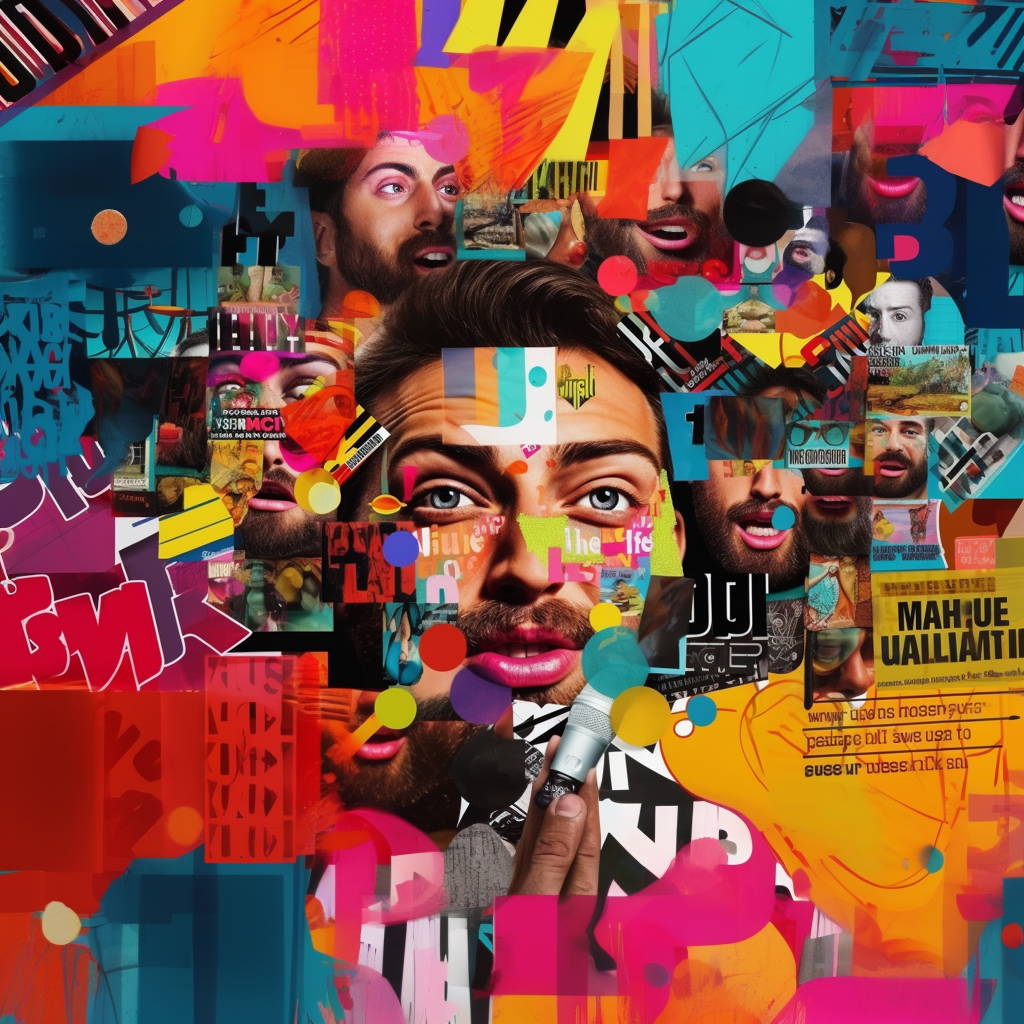Art and Creativity Quotations
Art’s Cultural Impact: Wisdom Through History
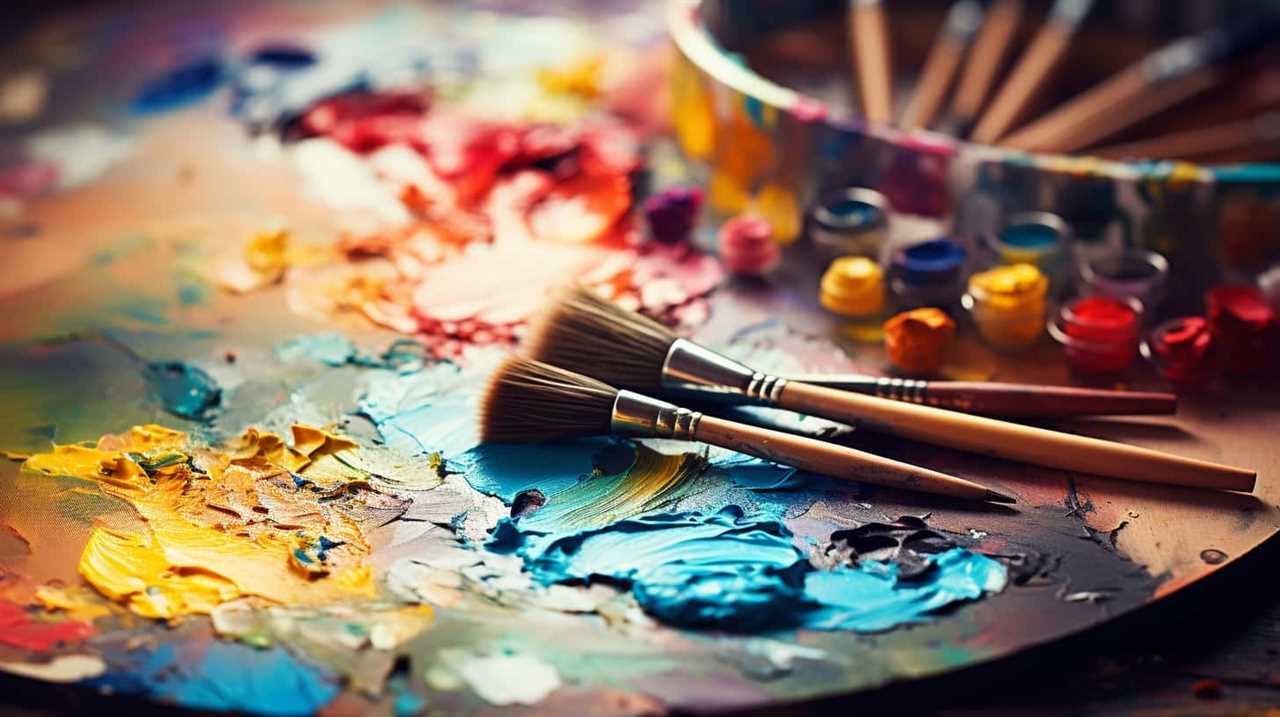
Throughout the diverse tapestry of human existence, art has woven its threads of understanding, illuminating the path of history with its profound cultural impact.
From the ancient cave paintings to the avant-garde masterpieces of today, art has served as a mirror, reflecting the beliefs, aspirations, and struggles of society.
Through its power of visual expression, art has transcended time, transcended boundaries, and transcended language, speaking directly to the innovative souls yearning for inspiration.
It has shaped cultural identities, sparked revolutions, and fueled political discourse. Art has been a catalyst for change, a vehicle for empathy and understanding, and a bridge for cultural exchange.
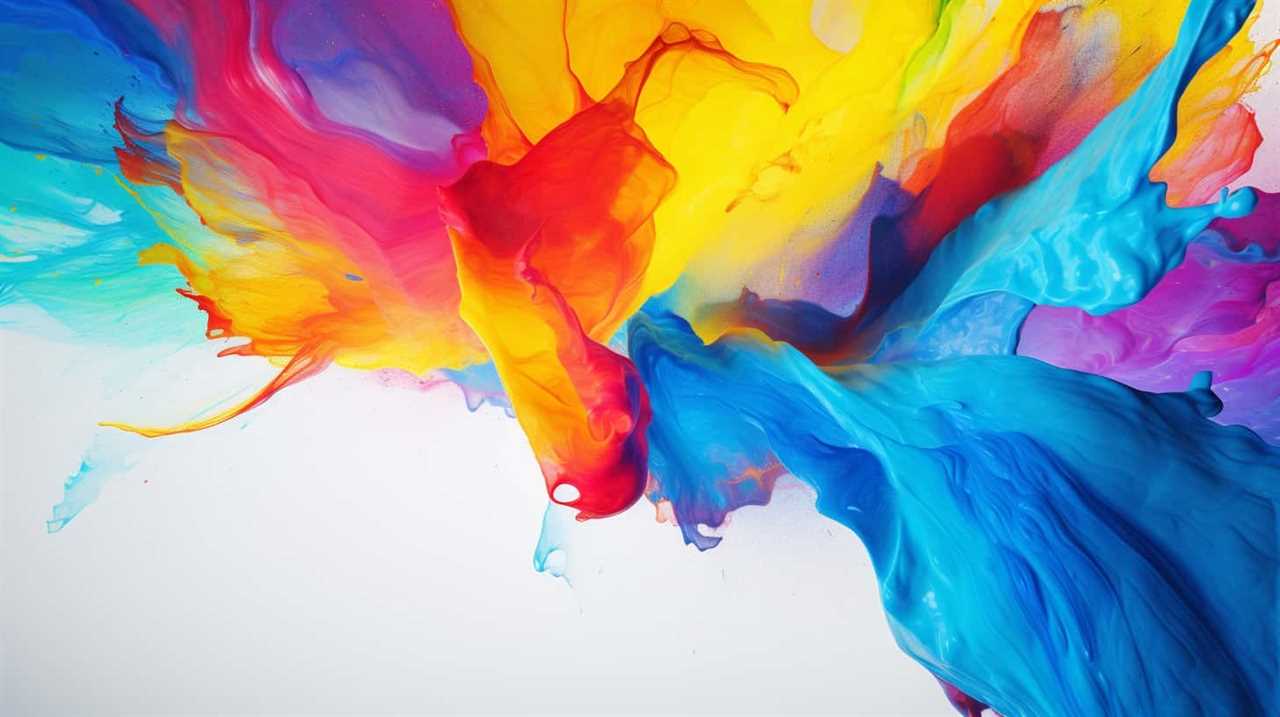
Moreover, it has preserved the fragments of our past, allowing us to unravel the tapestry of history and embrace the wisdom it imparts.
Key Takeaways
- Art reflects the values, beliefs, and attitudes of a society.
- Visual art transcends cultural boundaries and time periods.
- Art has played a crucial role in shaping societies and civilizations.
- Art has been a powerful form of protest and activism.
Art as a Reflection of Society
Art reflects the values, beliefs, and attitudes of a society. Throughout history, art has served as a mirror that reflects the societal norms and cultural practices of different civilizations. It provides a platform for artists to challenge and critique these norms, making art a powerful form of protest and activism.
Art has always been intertwined with societal norms, acting as a visual representation of what a particular society deems acceptable or desirable. From ancient cave paintings to contemporary street art, artists have used their creativity to express the values and beliefs of their time. By examining art from different periods, we can gain insights into the social, political, and cultural contexts in which they were created.
Moreover, art has often been used as a form of protest and activism. Artists have utilized their skills and creativity to challenge prevailing ideologies, advocate for social justice, and bring attention to pressing issues. For example, during the civil rights movement in the United States, artists like Jacob Lawrence and Faith Ringgold created powerful artworks that depicted the struggles and injustices faced by African Americans.
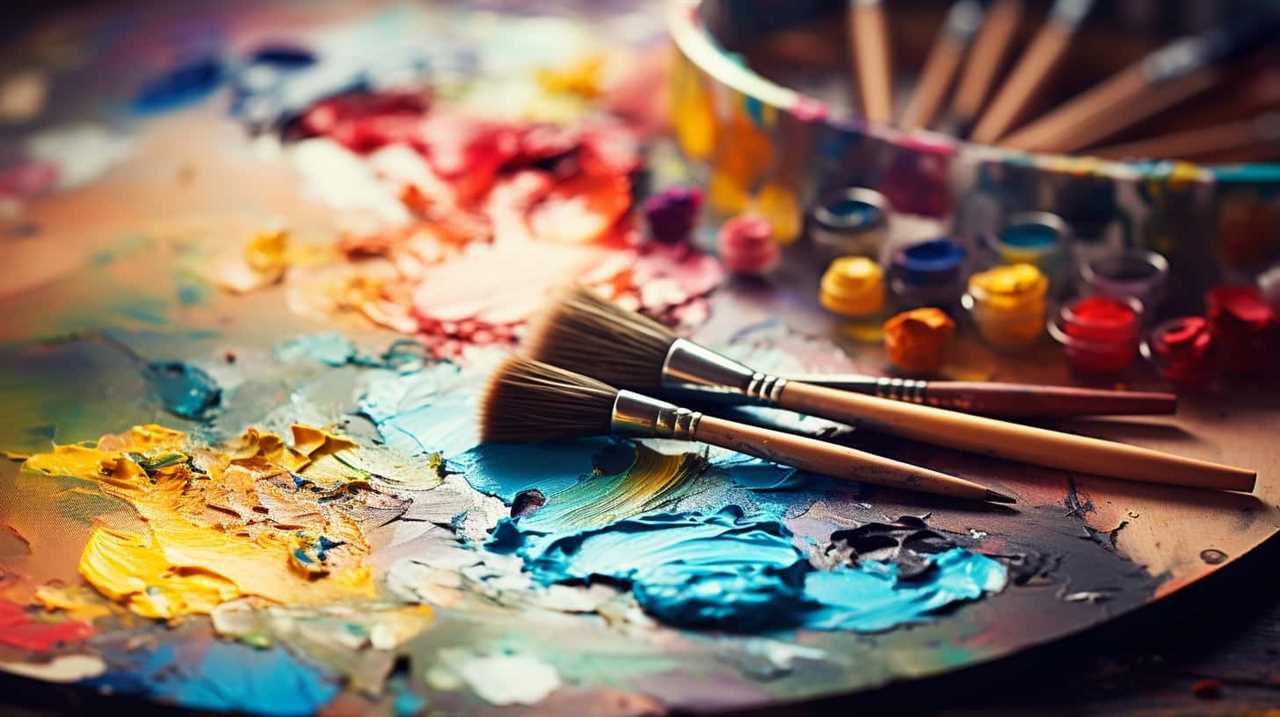
The Power of Visual Expression
Tap into the profound influence of visual expression throughout history. Visual art has always held a significant place in human societies, transcending cultural boundaries and time periods. It has the power to captivate, provoke, and inspire, leaving an indelible mark on individuals and communities.
One of the most remarkable aspects of visual art is its ability to provide therapeutic benefits. Art therapy has been used for centuries as a means of self-expression and healing. The act of creating art allows individuals to tap into their emotions, release stress, and gain a sense of control over their thoughts and feelings.
Moreover, art has long been intertwined with spirituality. Across different cultures and religions, art has served as a medium to explore and express one’s spiritual beliefs. From ancient cave paintings depicting religious rituals to intricate sculptures adorning sacred spaces, art has provided a tangible connection to the divine.
Through visual expression, we’re able to explore the depths of our human experience, find solace, and connect with something greater than ourselves. So, embrace the power of visual expression and let it guide you on a transformative journey of self-discovery and spiritual growth.
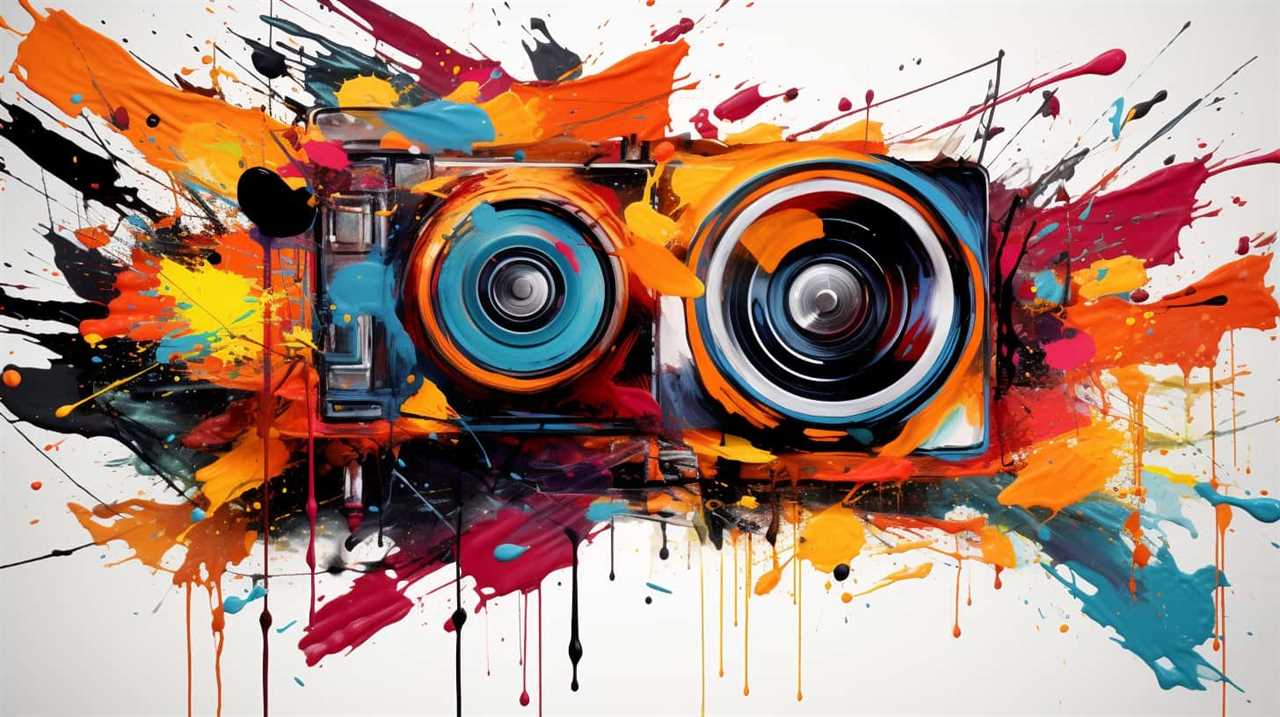
Historical Significance of Art
Exploring art’s historical significance allows you to uncover the profound impact it has had on cultures throughout the ages. Art hasn’t only served as a means of creative expression but has also played a crucial role in shaping societies and civilizations. Here are three key ways in which art has made its mark on history:
- Art’s economic impact: Throughout history, art has been a significant driver of economic growth. From the Renaissance to the present day, the art market has been a thriving industry, attracting collectors, investors, and tourists alike. Art auctions, galleries, and museums contribute significantly to local economies, generating revenue and creating job opportunities.
- Art’s role in education: Art has been an essential component of education for centuries. It has been recognized as a powerful tool for cultivating critical thinking, creativity, and cultural understanding. Art education provides students with the opportunity to explore their own creativity, appreciate different artistic styles, and develop a deeper understanding of historical and cultural contexts.
Art’s economic impact and its role in education are just two examples of the historical significance of art. As we delve deeper into the topic of art’s influence on cultural identity, we’ll discover how art has shaped and reflected the values, beliefs, and traditions of various societies throughout history.
Art’s Influence on Cultural Identity
Uncover the rich tapestry of cultural identity through art’s transformative power. Art has always played a significant role in shaping and reflecting cultural identity. It provides a platform for individuals and communities to express their beliefs, values, and traditions, and serves as a means of communication across generations. Through art, we can explore the complexities of our cultural heritage and gain a deeper understanding of ourselves and others.
To fully appreciate the impact of art on cultural identity, let’s examine the two key aspects: art therapy and art education. Art therapy, as a form of psychotherapy, utilizes creative expression to promote personal growth and healing. It allows individuals to explore their cultural experiences, reconnect with their roots, and find solace in their cultural identity. On the other hand, art education equips individuals with the knowledge and skills to appreciate and create art. By studying different artistic styles and techniques, individuals gain a broader perspective on cultural diversity and develop a deeper appreciation for their own cultural identity.
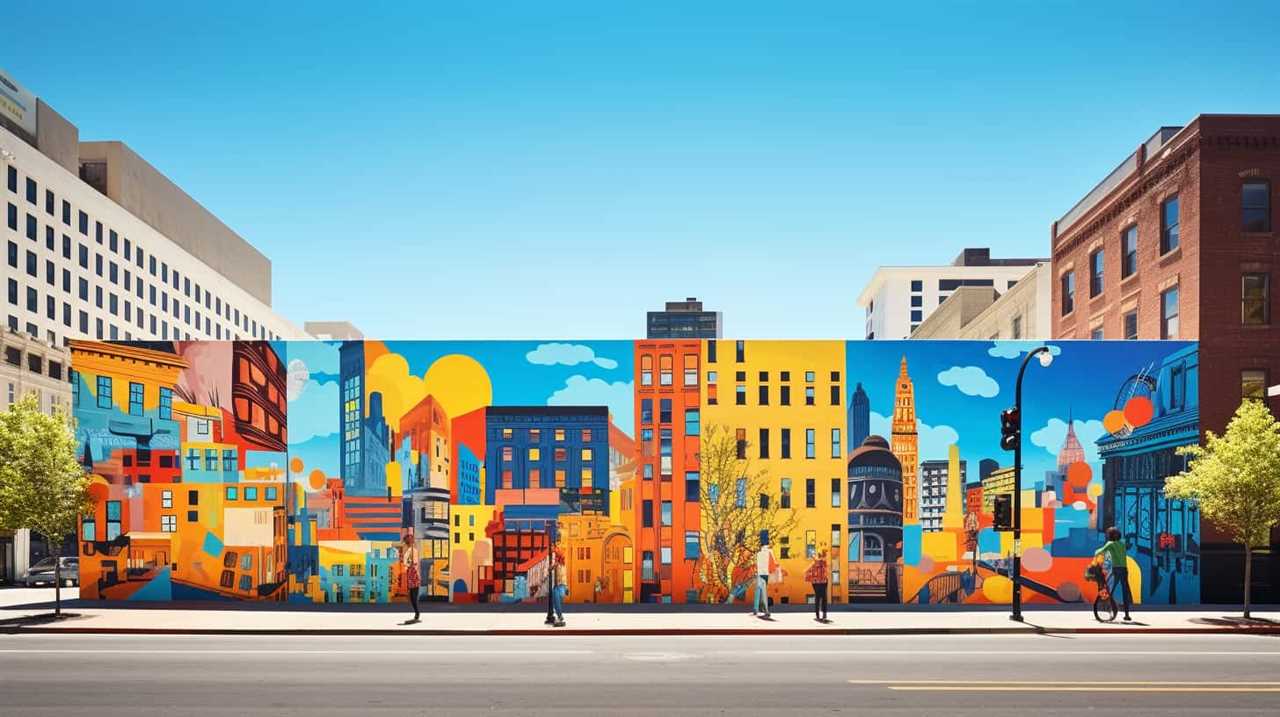
| Art Therapy | Art Education |
|---|---|
| Promotes healing | Fosters appreciation |
| Cultivates self-awareness | Encourages creativity |
| Connects individuals | Expands cultural horizons |
Art’s influence on cultural identity is undeniable. It nurtures a sense of belonging, fosters understanding, and bridges cultural gaps. As we delve deeper into the impact of art on cultural identity, we will discover how it serves as a catalyst for change in our society.
[Transition] Now, let’s explore how art can be a catalyst for change and transformation in our ever-evolving world.
Art as a Catalyst for Change
To understand the transformative potential of art, you must recognize its role as a catalyst for change throughout history. Art has consistently served as a powerful tool for activism, igniting social movements and challenging the status quo. Here are three ways in which art has acted as a catalyst for social change:
- Art as a means of communication: Art has the ability to transcend language barriers and connect with people on a deep emotional level. Through powerful images, music, and performances, artists have effectively conveyed messages of resistance, unity, and justice. Art becomes a universal language that inspires action and galvanizes communities.
- Art as a form of protest: Artists have long used their creativity to challenge oppressive systems and advocate for change. From political cartoons to graffiti, art has served as a powerful medium for expressing dissent and demanding social reform. By provoking thought and pushing boundaries, artists have sparked important conversations and mobilized collective action.
- Art as a platform for marginalized voices: Throughout history, art has provided a platform for marginalized communities to share their experiences and challenge dominant narratives. By amplifying their voices and highlighting their struggles, art has played a crucial role in raising awareness and fostering empathy. It has empowered individuals to reclaim their identities and demand social justice.
Art’s ability to inspire, provoke, and challenge makes it an invaluable catalyst for social change. As we explore the impact of art on society, it’s important to recognize the significant role it plays in shaping our world. From here, we’ll delve into the next section: ‘artistic expression as a form of resistance’.
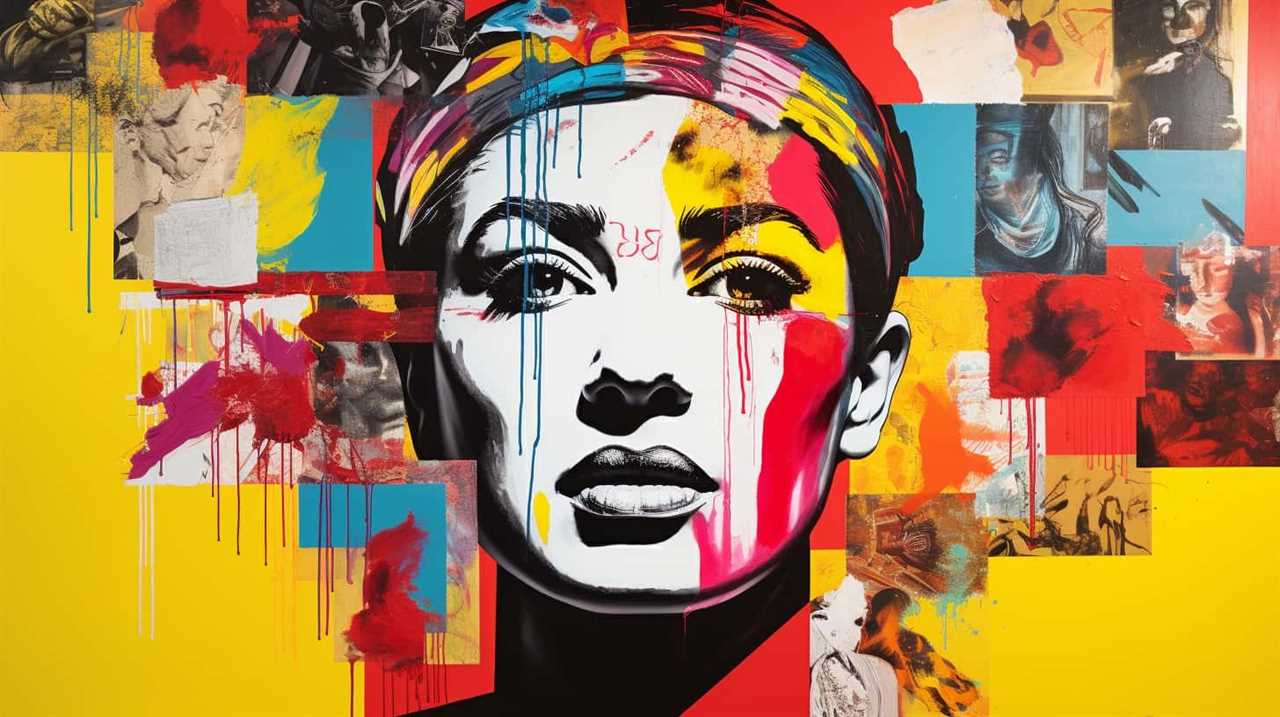
Artistic Expression as a Form of Resistance
Artists have utilized their creative talents to defy oppressive systems and challenge societal norms, making artistic expression a powerful tool of resistance. Throughout history, art has served as a form of protest, allowing individuals to express their dissent and challenge the status quo. From political cartoons to graffiti, artists have used their work to criticize authority, advocate for social change, and give voice to marginalized communities.
Art as a form of protest has the unique ability to transcend language barriers and reach a wide audience. Visual art, music, and performance can evoke powerful emotions and inspire collective action, making them effective tools for mobilizing social movements. For example, during the civil rights movement in the United States, artists such as Nina Simone and Bob Dylan used their music to raise awareness about racial inequality and galvanize support for the cause.
Moreover, art has the power to challenge entrenched cultural values and reshape societal perspectives. By presenting alternative narratives and challenging dominant ideologies, artists can spark conversations and inspire critical thinking. Through their work, artists can confront oppressive systems, advocate for marginalized voices, and push for social change.
As we delve deeper into the impact of art, it’s crucial to explore how art has shaped cultural values and influenced society’s understanding of various issues. By examining the historical context and analyzing the artistic techniques employed, we can gain a deeper appreciation for art’s role in shaping cultural values.
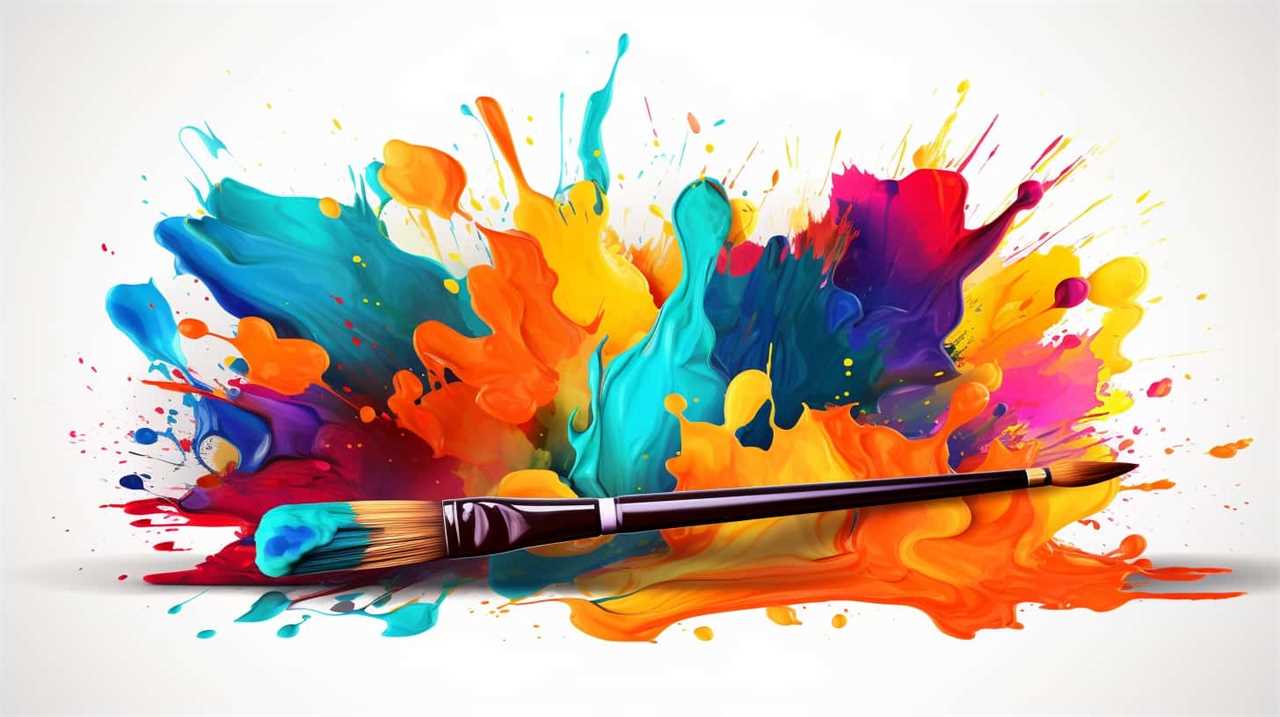
Art’s Role in Shaping Cultural Values
Art serves as a powerful social mirror that reflects the values and beliefs of a culture. Through various art forms such as literature, visual arts, and music, societies have been able to preserve their cultural heritage and pass it down to future generations.
Comparatively, art not only shapes cultural values, but it also provides a platform for individuals to challenge societal norms and provoke critical thinking, ultimately contributing to the evolution of cultural values over time.
Art as Social Mirror
As an observer of society, you can perceive how artworks reflect and influence cultural values. Art has long served as a powerful form of protest, allowing artists to challenge societal norms and ignite social change. Through their creations, artists can challenge the status quo, question authority, and shed light on important social issues.
Art has the ability to shape and redefine societal norms by presenting alternative perspectives and challenging existing beliefs. It can push boundaries, provoke thought, and inspire action. Art has the power to challenge the way we think and feel, and it can play a significant role in shaping cultural values.

By examining the works of art from different periods, we can gain valuable insights into the values and beliefs of those societies. This understanding allows us to appreciate the transformative power of art and its impact on the evolution of cultural norms.
As we explore the importance of art as a social mirror, it becomes evident that art not only reflects the values of a society but also has the potential to shape them.
Cultural Preservation Through Art
By examining artworks from different periods, you can gain valuable insights into how art has shaped and influenced cultural values throughout history.
Art serves as a powerful tool in cultural heritage preservation, acting as a cultural archive that captures the essence of a particular time and place.
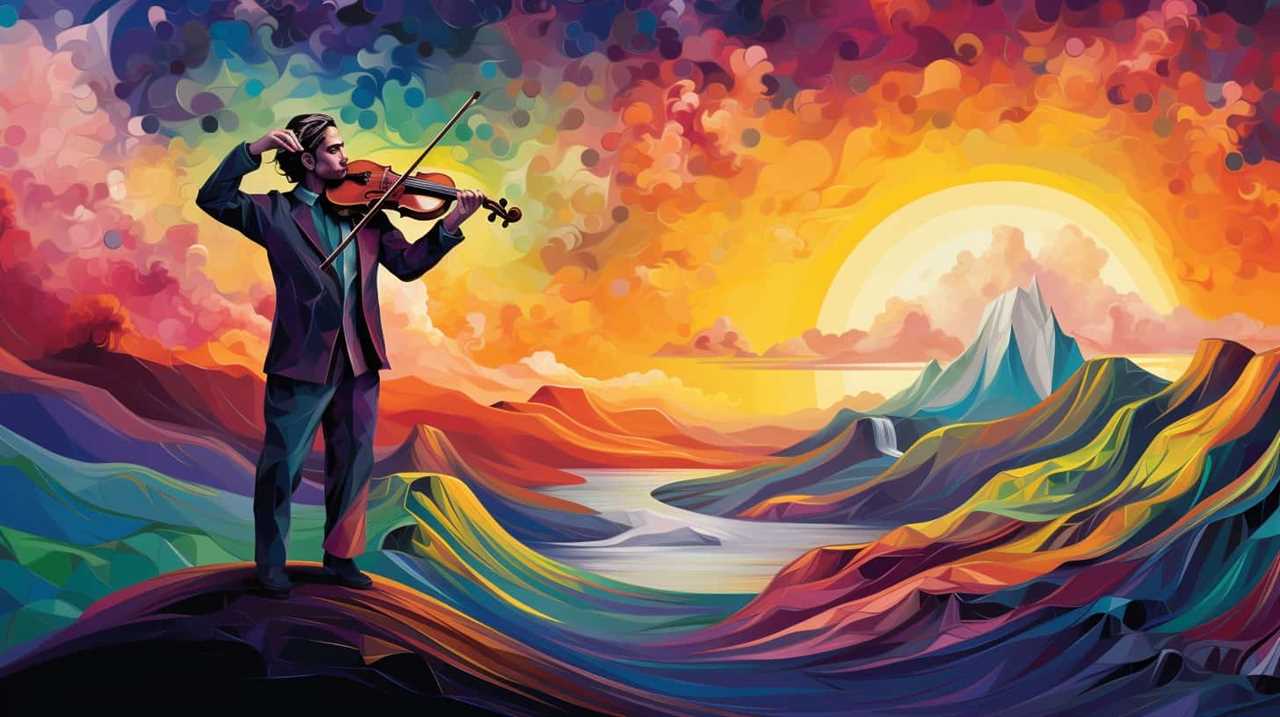
Through paintings, sculptures, and other artistic mediums, artists document the beliefs, traditions, and societal norms of their time, allowing future generations to understand and appreciate their cultural heritage.
Art not only reflects the values and ideals of a society but also has the ability to challenge and reshape them.
It provides a platform for dialogue and critical thinking, encouraging innovation and pushing boundaries.
As we explore the role of art in cultural preservation, it becomes evident that art’s ability to transmit cultural heritage is both significant and transformative.
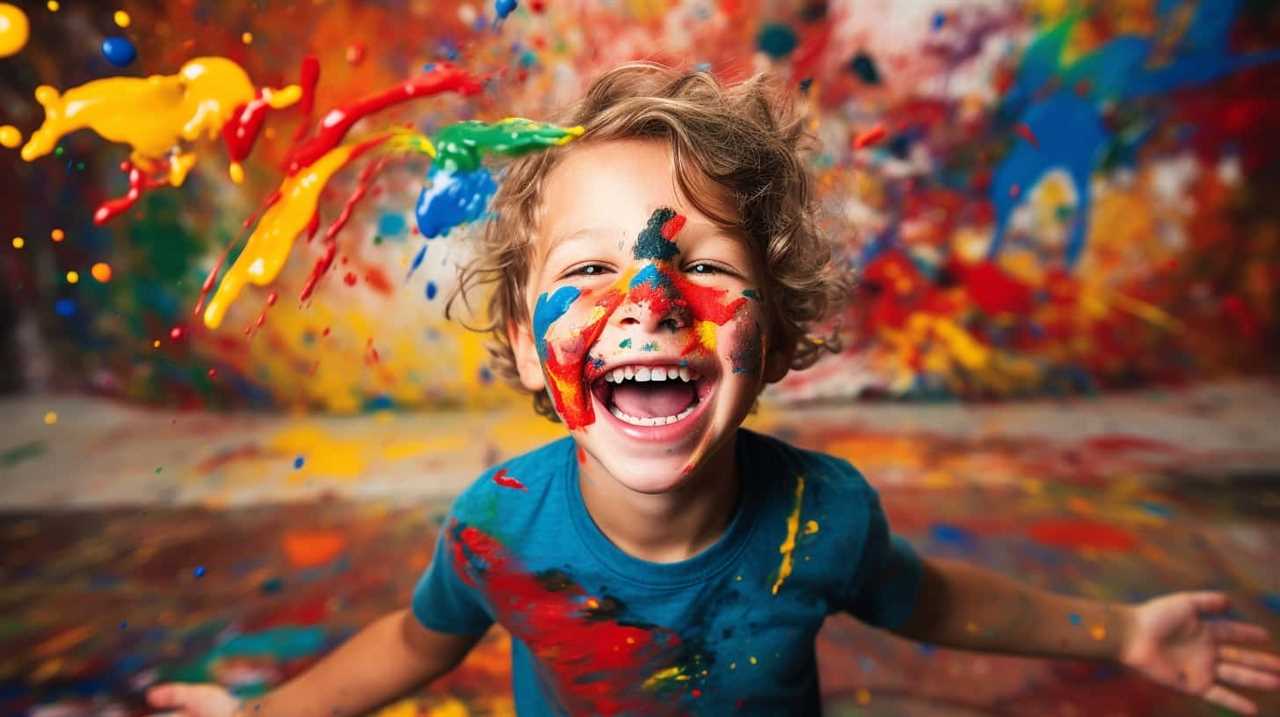
Art’s Ability to Transmit Cultural Heritage
Discover how art plays a vital role in preserving and passing down cultural heritage through the ages. Art has been a powerful tool for transmitting traditions and ensuring cultural preservation. Through various artistic mediums, cultures have been able to convey their heritage and values to future generations.
- Visual Representation: Art provides a visual representation of cultural practices, beliefs, and stories. Paintings, sculptures, and other visual artworks serve as tangible records of cultural traditions, allowing us to understand and appreciate the customs of past civilizations.
- Performative Arts: The performing arts, such as dance, music, and theater, have played a significant role in transmitting cultural heritage. These art forms give life to traditions, allowing people to experience and connect with the cultural practices of their ancestors.
- Oral Tradition: Art isn’t limited to visual and performative mediums. It also encompasses storytelling, poetry, and song, which have been instrumental in preserving cultural heritage through oral tradition. These artistic expressions pass down historical narratives, myths, and legends, ensuring that cultural knowledge is preserved and shared.
Art’s ability to transmit cultural heritage is essential for the enrichment and evolution of societies. It allows us to learn from the past, understand our present, and shape our future. By embracing art as a means of cultural preservation, we can continue to honor and celebrate the diversity and richness of human history.
Art as a Medium for Social Commentary
Art continues to serve as a powerful medium for social commentary, allowing you to explore and critique societal issues through creative expression. Artists have long used their work as a means to raise awareness, provoke thought, and advocate for change. By blending art and activism, they have been able to address pressing issues and contribute to social justice movements.
Artists have the unique ability to capture the essence of a social issue and convey it in a way that is accessible and thought-provoking. Through their work, they can challenge the status quo, question existing power structures, and shed light on marginalized communities. By utilizing their artistic talents, they can create a visual representation of the struggles faced by those who are often unheard.
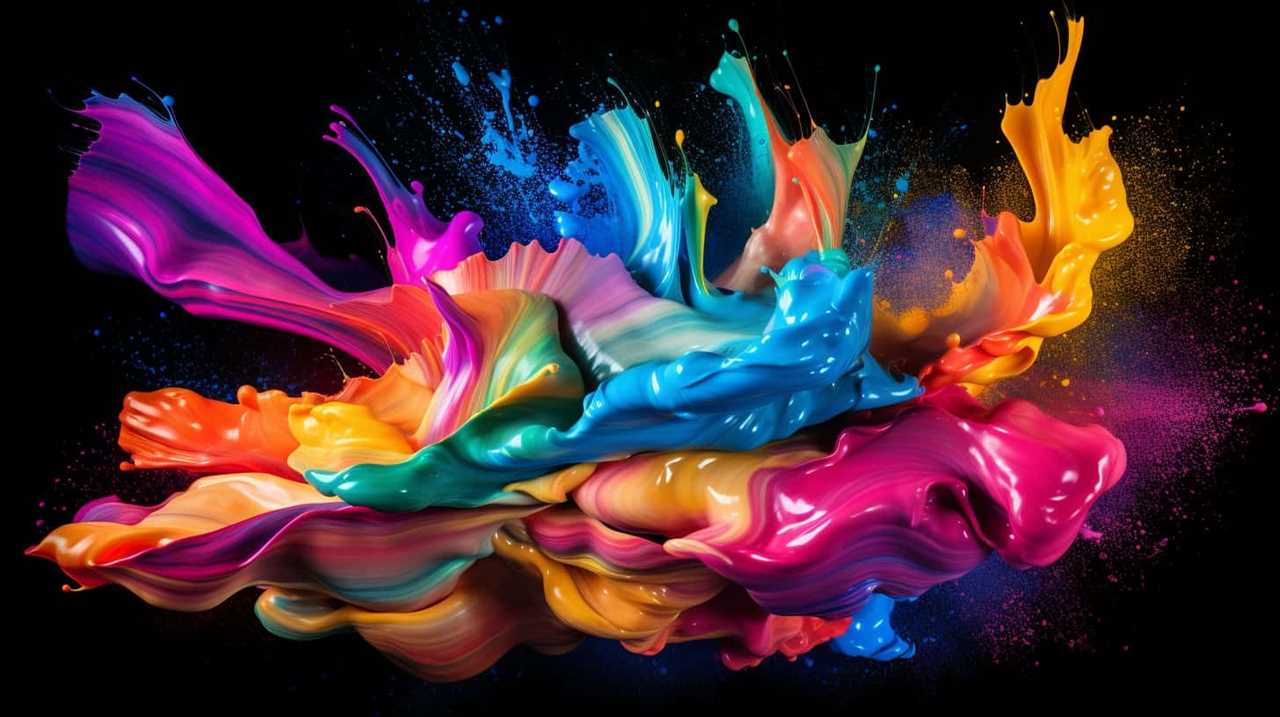
To illustrate the power of art as a medium for social commentary, consider the following table:
| Artwork | Issue | Message |
|---|---|---|
| "Guernica" by Pablo Picasso | War and violence | Condemnation of the horrors of war |
| "The Problem We All Live With" by Norman Rockwell | Racism and segregation | Advocacy for racial equality |
| "The Death of Marat" by Jacques-Louis David | Political corruption | Critique of the abuse of power |
These examples demonstrate how art can be used to address a range of societal issues, from war and racism to political corruption. By visually representing these issues, artists can engage viewers on an emotional level, sparking conversations and inspiring action.
Art and social justice have always been intertwined, as artists strive to contribute to a more equitable and inclusive society. Through their creativity and vision, they are able to challenge the status quo, disrupt established narratives, and advocate for change. As you engage with art that tackles social issues, consider the power it holds to inspire and ignite meaningful dialogue.
The Evolution of Artistic Styles
As you explore the evolution of artistic styles, you can witness the transformation and progression of creative expression throughout history. Artistic styles have constantly evolved, reflecting the changing times, societal values, and cultural movements.

Here are three evolutionary trends that have shaped the artistic landscape:
- Shift from Realism to Abstraction: Artists have moved away from realistic representations towards abstract forms, pushing the boundaries of traditional art. This shift has allowed for greater experimentation and a departure from conventional artistic techniques.
- Emphasis on Individualism: With the rise of individualism in society, artists have sought to express their unique perspectives and experiences through their work. This emphasis on individualism has led to diverse artistic styles and a celebration of personal expression.
- Influence of Cultural Movements: Artistic styles have been greatly influenced by cultural movements such as Renaissance, Impressionism, Cubism, and Pop Art. These movements haven’t only changed the aesthetic of art but also challenged societal norms and sparked important conversations.
Art’s Impact on Emotional Well-being
Art’s impact on emotional well-being can’t be understated. Through the lens of mental health, art has been shown to provide a therapeutic outlet for individuals to express their emotions and cope with their struggles.
Additionally, art has the power to heal, offering a sense of solace and comfort to those who engage with it. In comparison to other forms of expression, art uniquely allows individuals to tap into their innermost feelings and find solace in the beauty and creativity it embodies.
Art and Mental Health
Discover the profound impact of art on your emotional well-being. Art has long been recognized as a powerful tool for promoting mental health and emotional well-being. Whether through art therapy or self-expression, engaging in artistic activities can have transformative effects on your mental state.
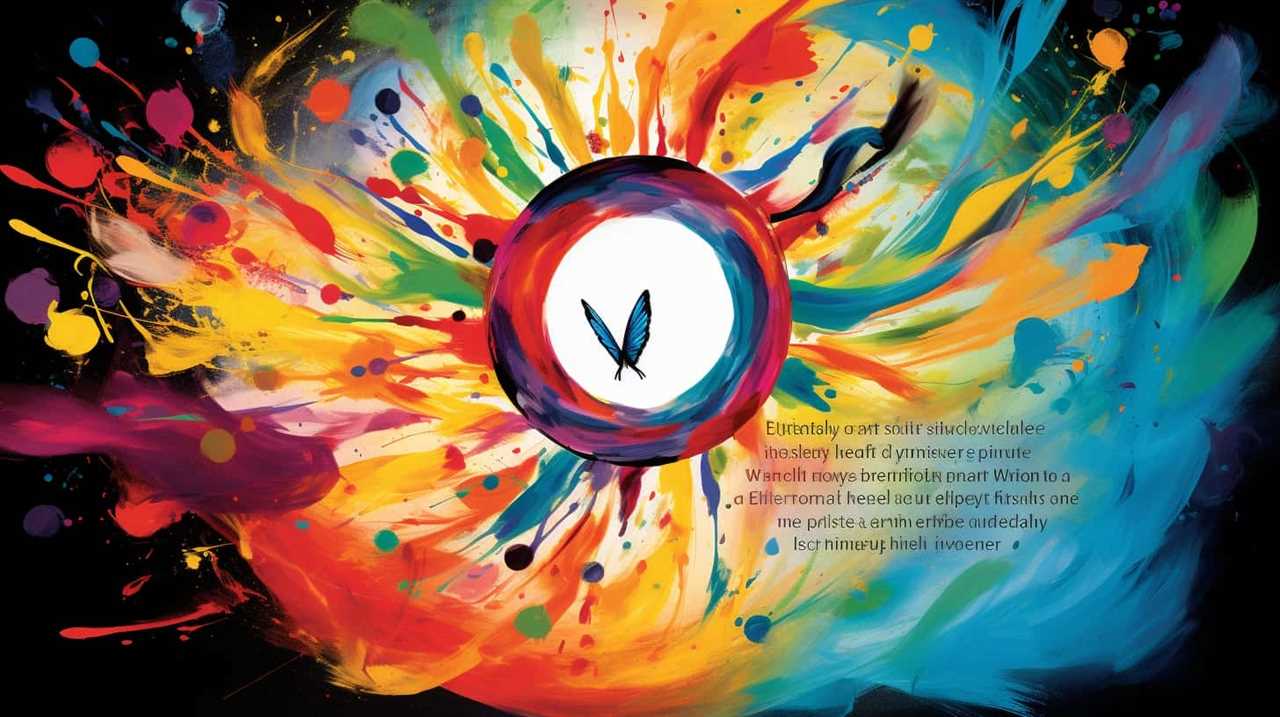
Here are three reasons why art can have a positive impact on your emotional well-being:
- Art therapy allows you to explore and express your emotions in a safe and supportive environment.
- Creating art provides an outlet for self-expression, allowing you to communicate and process complex emotions.
- Engaging with art can promote relaxation and stress reduction, helping to alleviate symptoms of anxiety and depression.
By harnessing the power of art, you can tap into your inner emotions, gain insight into your mental state, and find solace and healing.
Now, let’s delve into the next section and explore the process of expressing emotions through art.
Expressing Emotions Through Art
Explore how expressing your emotions through art can have a profound impact on your emotional well-being throughout history.

Artistic expression has long been recognized as a powerful tool for healing and self-discovery. Art therapy, a form of psychotherapy, utilizes the creative process to improve mental and emotional well-being. By engaging in art, individuals are able to externalize and process their emotions, leading to increased self-awareness and a sense of empowerment.
This process allows for the exploration of complex emotions that may be difficult to articulate verbally. Through art, individuals can visually represent their innermost thoughts and feelings, creating a tangible reflection of their emotional state.
Furthermore, the act of creating art can promote relaxation, reduce stress, and increase feelings of happiness and fulfillment. Whether it’s painting, drawing, or sculpting, embracing artistic expression can provide a means of emotional release and contribute to overall well-being.
Healing Power of Art
Expressing your emotions through art can have a profound impact on your emotional well-being. Art therapy, a form of therapy that utilizes artistic expression, has been proven to be effective in helping individuals cope with emotional challenges and trauma. Through the act of creating art, individuals are able to externalize their emotions, gain insight into their feelings, and find solace and healing.

Art provides a safe and non-judgmental space for self-expression, allowing individuals to release pent-up emotions and explore their inner world. Furthermore, art has the power to bring communities together and foster healing on a collective level. Artistic projects and initiatives can create a sense of unity, promote empathy, and provide a platform for individuals to share their experiences and find support.
Art truly has the ability to heal and transform both individuals and communities.
Art’s Role in Building Empathy and Understanding
Art has the power to foster empathy and understanding in individuals through its ability to evoke emotional responses and provoke thought. By engaging with art, we can develop a deeper understanding and appreciation for the experiences and perspectives of others, ultimately bridging cultural divides and building connections.
Art has long played a role in fostering empathy by providing a platform for diverse voices and narratives. Through paintings, sculptures, literature, and performances, artists can convey complex emotions and experiences that resonate with people from different backgrounds. This shared emotional experience allows us to put ourselves in someone else’s shoes, fostering empathy and understanding.
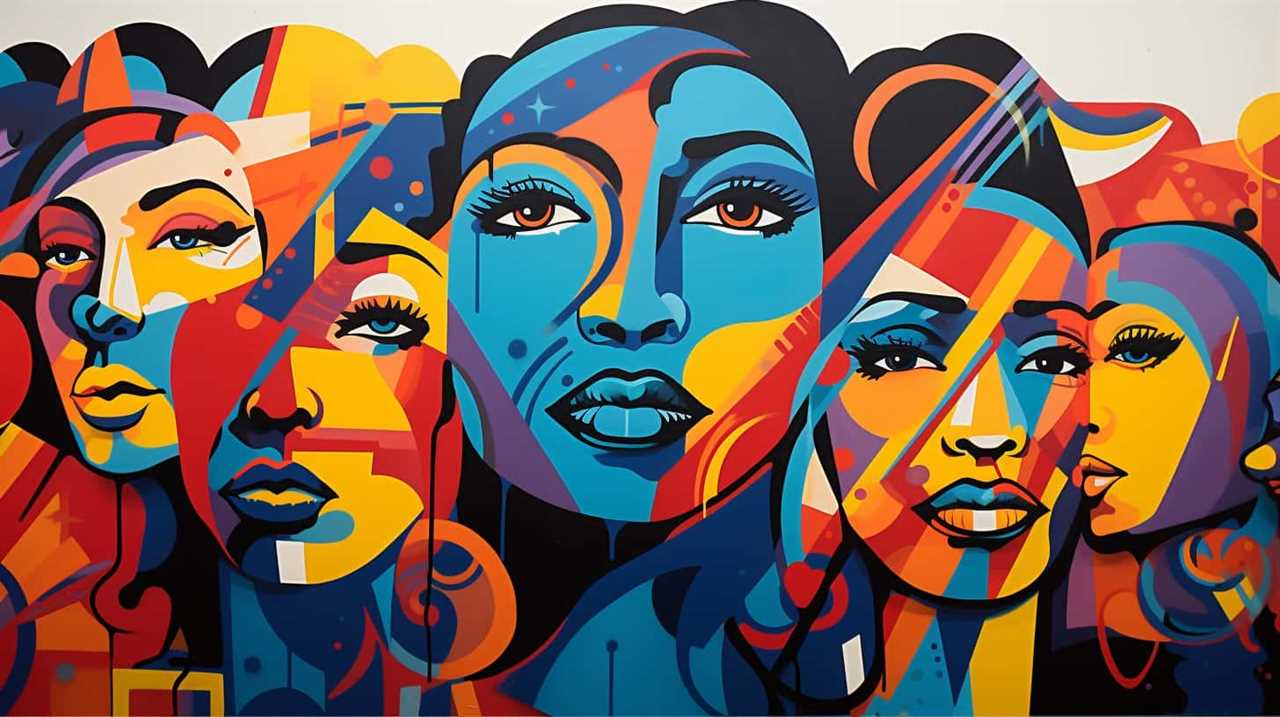
Moreover, art has the unique ability to transcend language and cultural barriers. Visual art, for example, can communicate universal themes and emotions that resonate with people around the world. Whether it’s a powerful photograph or a vibrant painting, art has the power to evoke a visceral response that transcends cultural differences.
Art also encourages us to question our assumptions and biases. By presenting new perspectives and challenging societal norms, art prompts us to think critically and reflect on our own beliefs. Through this process of self-reflection, we can develop a greater understanding of others and cultivate empathy.
Art’s Influence on Political Discourse
One can observe how art shapes and influences political discourse through its ability to challenge and provoke societal norms and beliefs. Art has always had a profound impact on political activism, serving as a powerful tool for expressing dissent and inspiring social change. It has the unique ability to communicate complex political ideas in a way that’s accessible and relatable to the public. By presenting alternative perspectives and challenging established power structures, art encourages critical thinking and fosters a deeper understanding of political issues.
Art’s influence on political activism can be seen in various forms. Artists often use their work to raise awareness about social and political injustices, shedding light on marginalized communities and giving voice to the voiceless. Through their creations, they ignite public discourse and mobilize communities to take action. Whether it’s through visual art, music, or performance, art has the power to galvanize individuals and spark social movements.
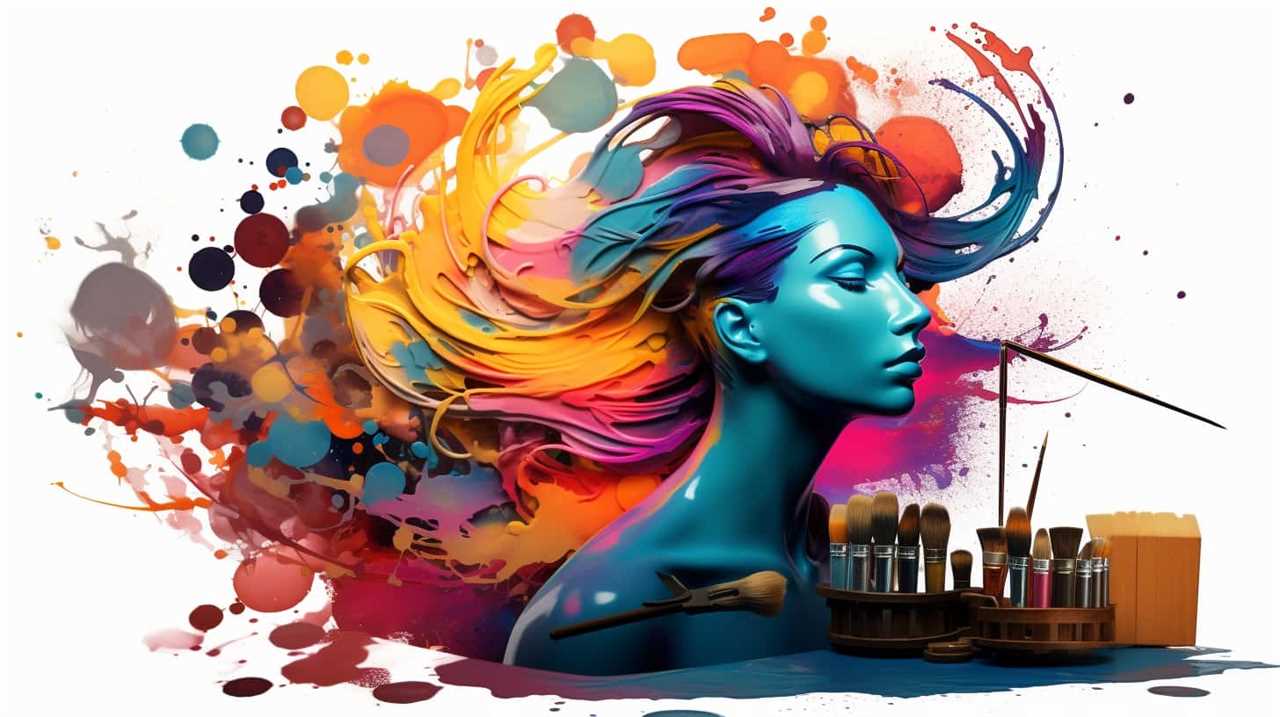
Furthermore, art plays a crucial role in shaping public opinion. It has the ability to evoke emotions, provoke thought, and challenge preconceived notions. By presenting alternative narratives and perspectives, art encourages dialogue and fosters a more inclusive and democratic society. It can challenge the status quo and promote critical thinking, ultimately leading to a more informed and engaged citizenry.
Art as a Vehicle for Cultural Exchange
Art has the power to transcend cultural boundaries, serving as a universal language that connects people from different backgrounds.
Through artistic exchange, individuals gain exposure to diverse perspectives, traditions, and experiences, fostering a deeper understanding and appreciation of various cultures.
This exchange of artistic ideas and influences not only enriches the global artistic landscape but also promotes cultural dialogue, tolerance, and unity.
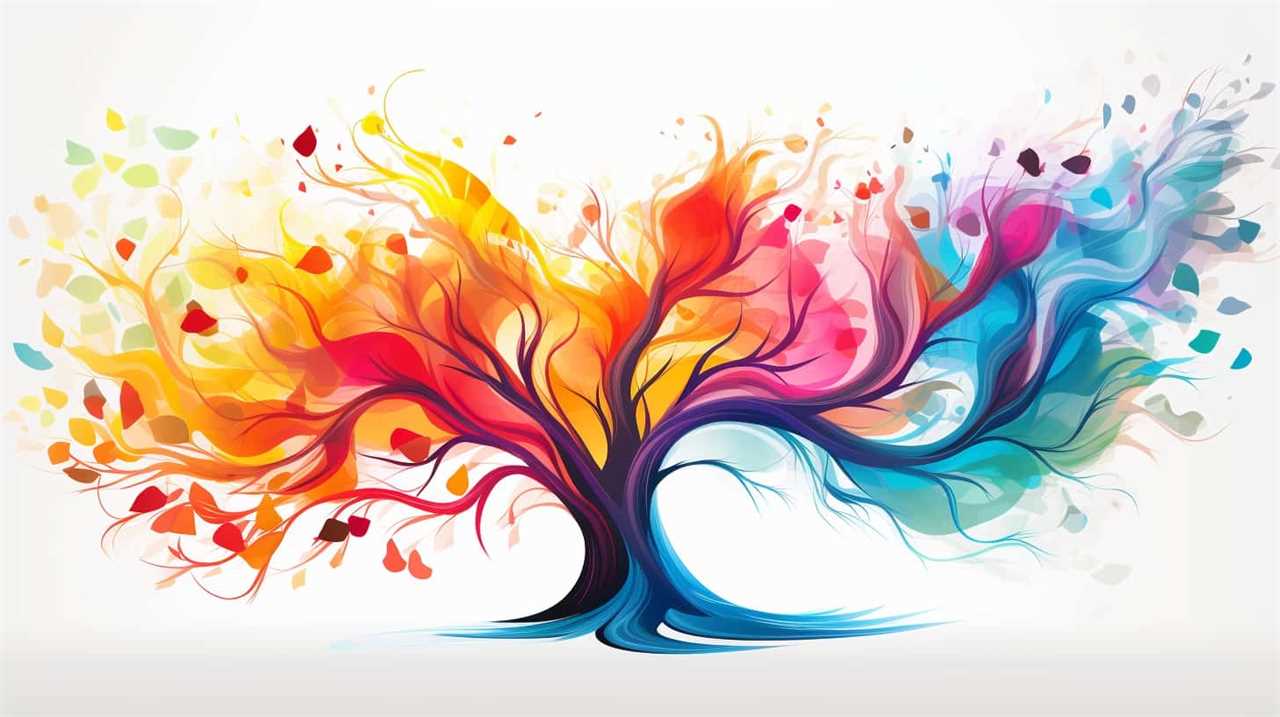
Art Transcending Cultural Boundaries
How can art act as a vehicle for cultural exchange, transcending boundaries and connecting people from diverse backgrounds?
Artistic interpretation allows individuals to express their unique perspectives, capturing the essence of their culture and identity. Through this artistic lens, cultures can merge and create a beautiful tapestry of ideas and influences.
Cultural fusion occurs when different traditions blend together, resulting in new forms of artistic expression that reflect the shared experiences of diverse communities.
Art transcends language barriers, enabling individuals from different cultures to connect and understand one another on a deeper level. It serves as a universal language, allowing for meaningful dialogue and the exchange of ideas.
By fostering cultural exchange, art promotes empathy, understanding, and appreciation of diverse perspectives, ultimately bridging the gaps between cultures and fostering a more inclusive society.
This impact of artistic exchange highlights the profound influence that art has on shaping our world.
Impact of Artistic Exchange
Discover the transformative power of artistic exchange, as it connects and unites diverse cultures through a shared language of creativity and expression.
Cultural fusion and artistic collaboration have become essential tools for fostering cultural exchange in today’s globalized world. Through artistic exchange, individuals and communities can engage with different perspectives, traditions, and forms of artistic expression, leading to a deeper understanding and appreciation of diverse cultures.
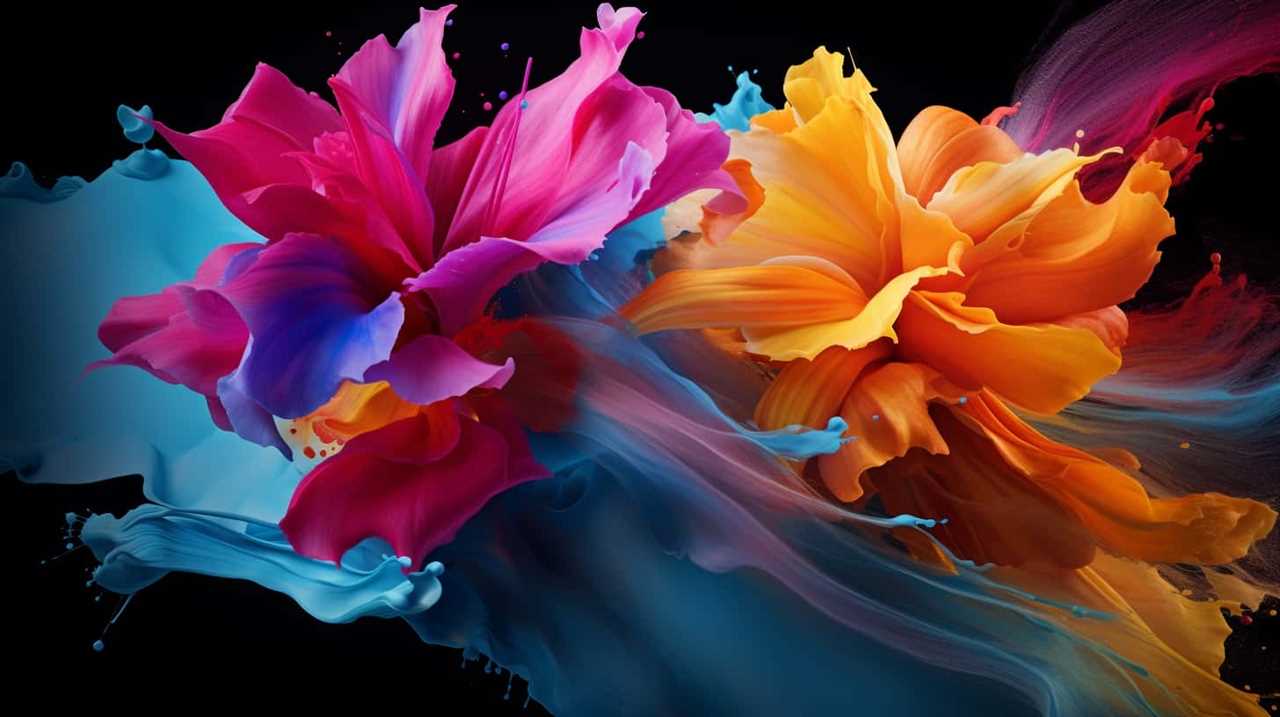
Artistic collaboration allows artists from different backgrounds to come together, combining their unique experiences and artistic styles to create something truly innovative. This exchange not only enriches the art itself but also promotes cross-cultural understanding and dialogue. By transcending cultural boundaries, artistic exchange encourages the exploration of new ideas and the dismantling of stereotypes and prejudices.
Furthermore, artistic exchange fosters innovation by encouraging the exchange of techniques, materials, and artistic practices. It provides a platform for artists to learn from one another, pushing the boundaries of their own creativity and inspiring new forms of artistic expression. Through this exchange, cultures can learn from each other and create a shared artistic language that promotes unity and cooperation.
Art’s Role in Preserving History and Memory
Preserving history and memory is accomplished through art’s ability to capture and depict significant moments. Art has a unique connection to historical preservation, as it serves as a visual record of past events, allowing us to revisit and understand our collective past.
Through the use of powerful imagery and symbolism, art helps us remember and commemorate important historical events, ensuring that they aren’t forgotten.

Art’s role in collective memory is pivotal. It has the power to evoke emotions, spark conversations, and provoke thought, making it an effective tool for preserving history and memory. By portraying historical events and figures, art becomes a visual representation of our shared narrative, reminding us of our roots and shaping our cultural identity.
In this context, art functions as a time capsule, capturing the essence of a particular era and preserving it for future generations. It allows us to look back and reflect on our past, providing us with valuable insights and lessons. Through art, we can gain a deeper understanding of our history, connecting us to those who came before us and fostering a sense of continuity and belonging.
Frequently Asked Questions
How Does Art Influence Political Discourse?
Art shapes public opinion by providing a platform for political discourse. Through artistic expression, individuals can convey their beliefs, challenge authority, and ignite change. Art serves as a powerful tool for political activism, mobilizing communities to fight for social justice and equality.
How Does Art Serve as a Vehicle for Cultural Exchange?
Art serves as a vehicle for cultural exchange by transcending language and communicating universal emotions and ideas. Through its expressive power, it fosters understanding and empathy, bridging gaps between diverse cultures and enriching our collective wisdom.
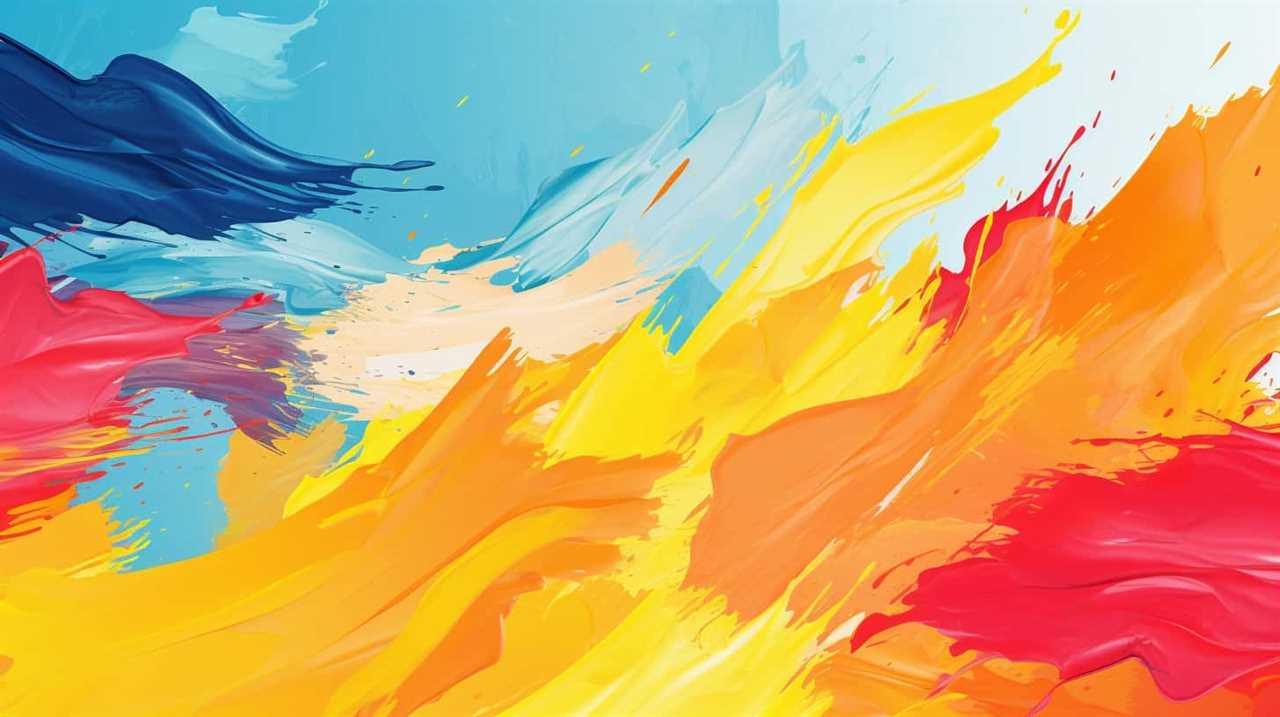
What Is the Role of Art in Preserving History and Memory?
Art’s preservation significance lies in its ability to capture and document history. Through visual representations and storytelling, art serves as a powerful tool in preserving and transmitting collective memory, allowing us to connect with the past and gain wisdom from it.
How Does Art Impact Emotional Well-Being?
Art impacts your emotional well-being by serving as a form of therapy and self-expression. Through art, you can explore and process your emotions, allowing for personal growth and healing. It provides a unique avenue for self-discovery and emotional release.
How Does Art Contribute to Building Empathy and Understanding?
Art contributes to building empathy and understanding by creating connections between individuals. Through its expressive nature, art fosters compassion by allowing people to relate to the experiences and emotions of others, ultimately promoting a more empathetic and understanding society.
Conclusion
As you stand before a masterpiece, you aren’t merely witnessing art; you’re experiencing the essence of humanity. Art has the power to transcend time and culture, allowing us to connect with the past, understand the present, and shape the future.
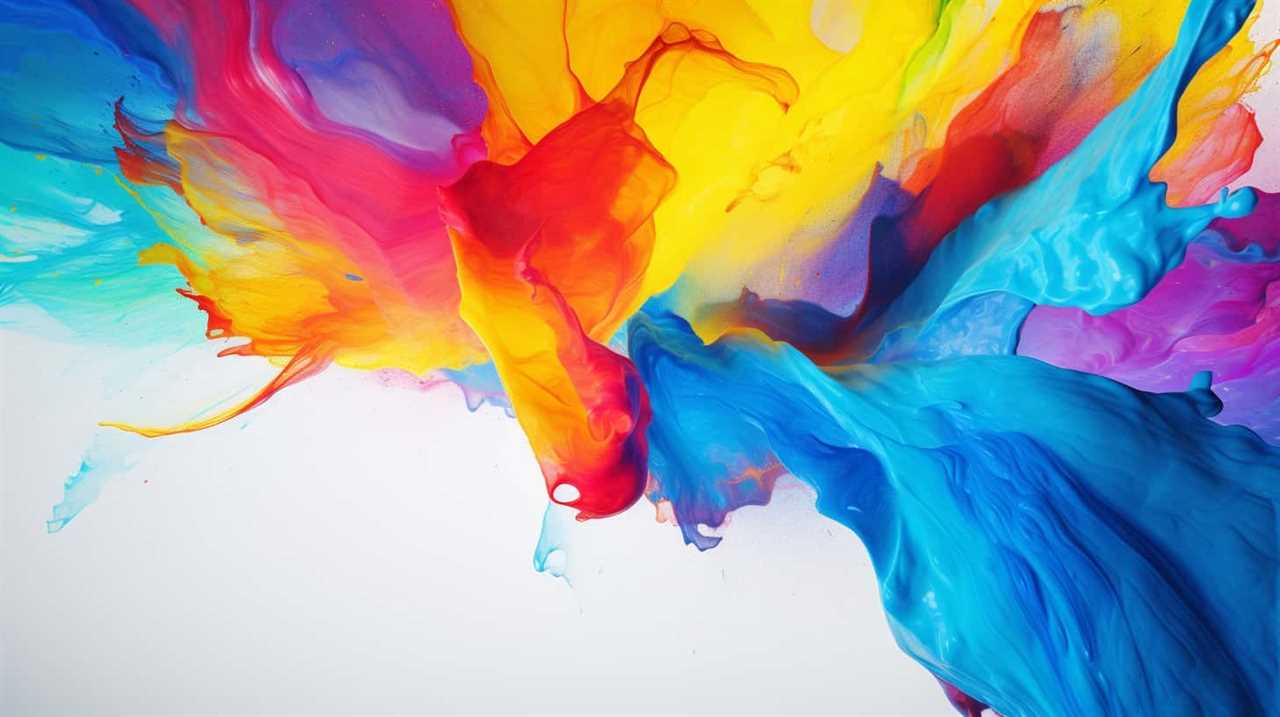
Like a mirror, it reflects our society, provoking thought and igniting change. Art is the bridge that unites us, fostering empathy and understanding.
It’s through art that we preserve our history, exchange our cultures, and find wisdom that echoes through the ages.
Fritz is a writer whose humor and wit infuse life into words. His creativity, combined with a profound love for the English language, makes him a unique voice at afterQuotes. Fritz’s engagement with books, culture, and social media adds depth to his contributions, making them resonate with our diverse audience.
Art and Creativity Quotations
7 Best Empowering Quotes by Today’s Female Creatives

We discovered a wealth of inspiration, dear readers! Today, we bring you the top 7 empowering quotes from today’s female creatives.
These remarkable women have shattered glass ceilings, challenged societal norms, and unleashed their artistic prowess, leaving an indelible mark on the world.
Through their words, they ignite the fire within us, urging us to embrace our infinite potential, unleash the power of narrative, and express ourselves fearlessly.
They remind us to challenge the status quo, celebrate our authentic identities, and push boundaries to redefine art.
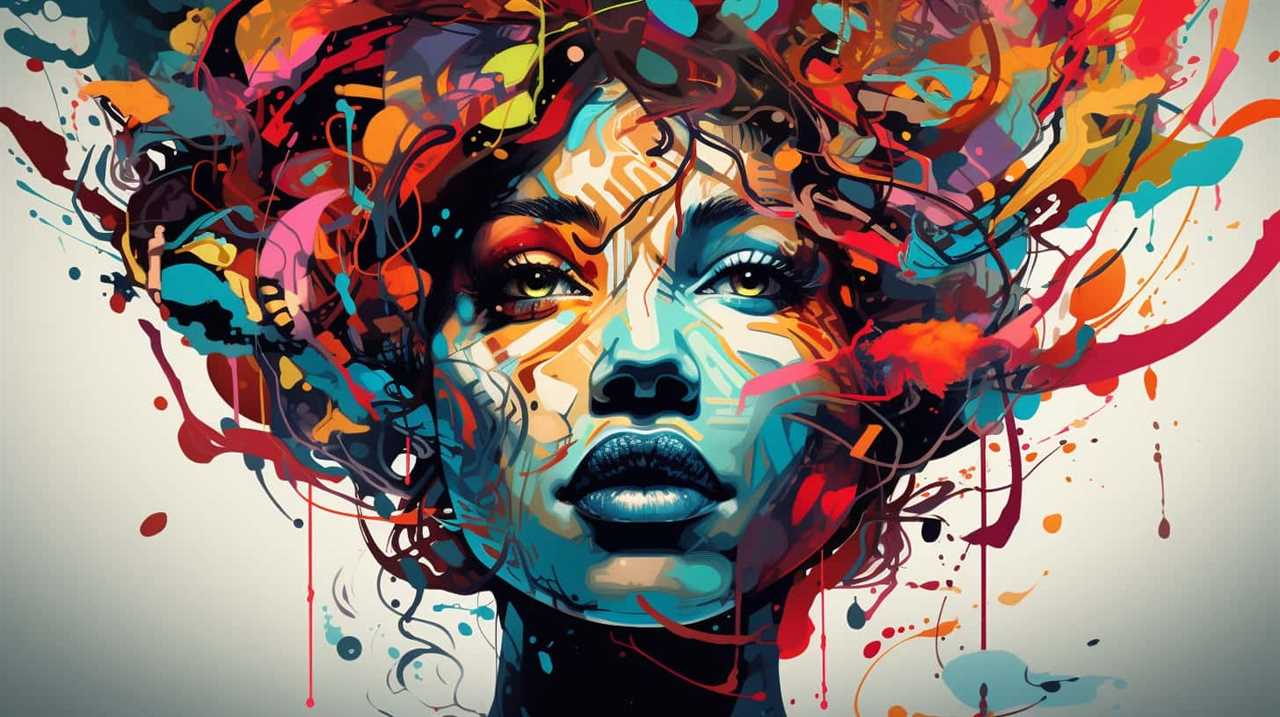
With their wisdom, they celebrate the strength of vulnerability and prove that it is our greatest asset.
Get ready to be uplifted, inspired, and empowered as we delve into the minds of these incredible female creatives.
Key Takeaways
- Embracing individuality and potential empowers us to pursue our passions and explore our creativity.
- Visual storytelling through art challenges societal norms and inspires change, creating a space for marginalized voices to be heard.
- Art has the transformative potential to liberate and empower individuals, allowing us to question the status quo and envision a better world.
- Embracing vulnerability is a source of strength and liberation, enabling deeper connections with others and fostering empathy and understanding.
Yayoi Kusama: Embrace Your Infinite Potential
Yayoi Kusama’s quote inspires us to embrace our infinite potential. In a world that often seeks conformity, Kusama’s words remind us of the importance of embracing our individuality. She encourages us to break free from societal expectations and find inspiration within ourselves.
Embracing our individuality is a liberating act. It allows us to fully express who we’re without fear of judgment or rejection. It empowers us to pursue our passions, explore our creativity, and discover our unique voice in the world. By embracing our individuality, we become unstoppable forces of change and innovation.
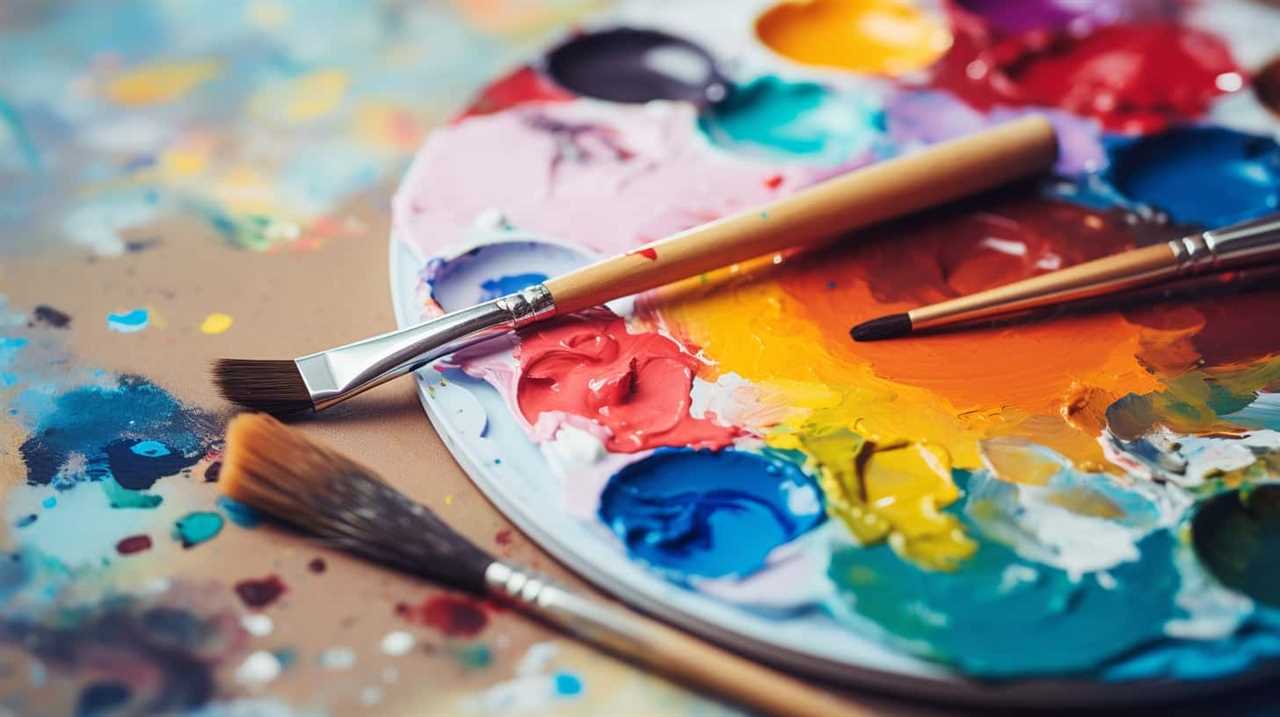
Finding inspiration is an essential part of the creative process. Kusama urges us to look within ourselves and our surroundings for that spark of inspiration. It can be found in the simplest of things – a vibrant color, a delicate flower, or a chaotic cityscape. By being open to the world around us, we can find inspiration in unexpected places.
Kusama’s quote serves as a reminder that we’re limitless beings capable of achieving extraordinary things. By embracing our individuality and finding inspiration, we can tap into our infinite potential and create a life that’s truly fulfilling. So let’s celebrate our uniqueness and fearlessly embark on a journey of self-discovery and self-expression.
Kara Walker: Unleashing the Power of Narrative
Kara Walker’s storytelling prowess unleashes the transformative power of narrative. As a female creative, she understands the importance of storytelling in liberating and empowering individuals. Here are three ways in which she unleashes the narrative power:
- Confronting history: Walker fearlessly delves into the dark and uncomfortable corners of history, using her art to challenge traditional narratives and shed light on overlooked perspectives. By confronting history head-on, she empowers her audience to question preconceived notions and seek a deeper understanding of the world.
- Provoking dialogue: Through her provocative and thought-provoking artwork, Walker sparks conversations about race, gender, and power dynamics. By encouraging dialogue, she fosters a space for open and honest discussions, challenging societal norms and encouraging introspection.
- Amplifying marginalized voices: Walker gives a voice to those who’ve been silenced by society. Her art amplifies the experiences and stories of marginalized individuals, shedding light on their struggles and triumphs. By doing so, she empowers these voices and ensures that their narratives are heard and acknowledged.
Kara Walker’s ability to unleash the power of narrative through her storytelling is a testament to the transformative potential of art. Through her work, she encourages liberation, empowerment, and a deeper understanding of the world we live in.

Shirin Neshat: Empowering Through Artistic Expression
When it comes to empowering through artistic expression, Shirin Neshat’s work stands out. Her art serves as a form of feminist resistance, challenging societal norms and giving a voice to marginalized women.
Through her powerful visual storytelling, Neshat has the ability to create impact and spark conversation about important issues surrounding gender, identity, and cultural boundaries.
Art as Feminist Resistance
Artistic expression serves as a powerful tool of feminist resistance, empowering individuals like Shirin Neshat to challenge societal norms and advocate for gender equality. Through her work, Neshat embodies the spirit of feminist art movements and demonstrates the potential for women’s empowerment through creativity. Here are three ways in which art serves as a vehicle for feminist resistance:
- Breaking stereotypes: Art allows women to redefine their identities and challenge traditional gender roles, breaking free from the limitations imposed by society.
- Amplifying women’s voices: Art provides a platform for women to share their experiences, perspectives, and stories, giving them a voice and raising awareness about gender inequality.
- Inspiring collective action: Art has the power to inspire and mobilize communities, fostering solidarity among women and encouraging them to stand together in the fight for gender equality.
By harnessing the power of artistic expression, Neshat and other female creatives pave the way for a more inclusive and liberated society.
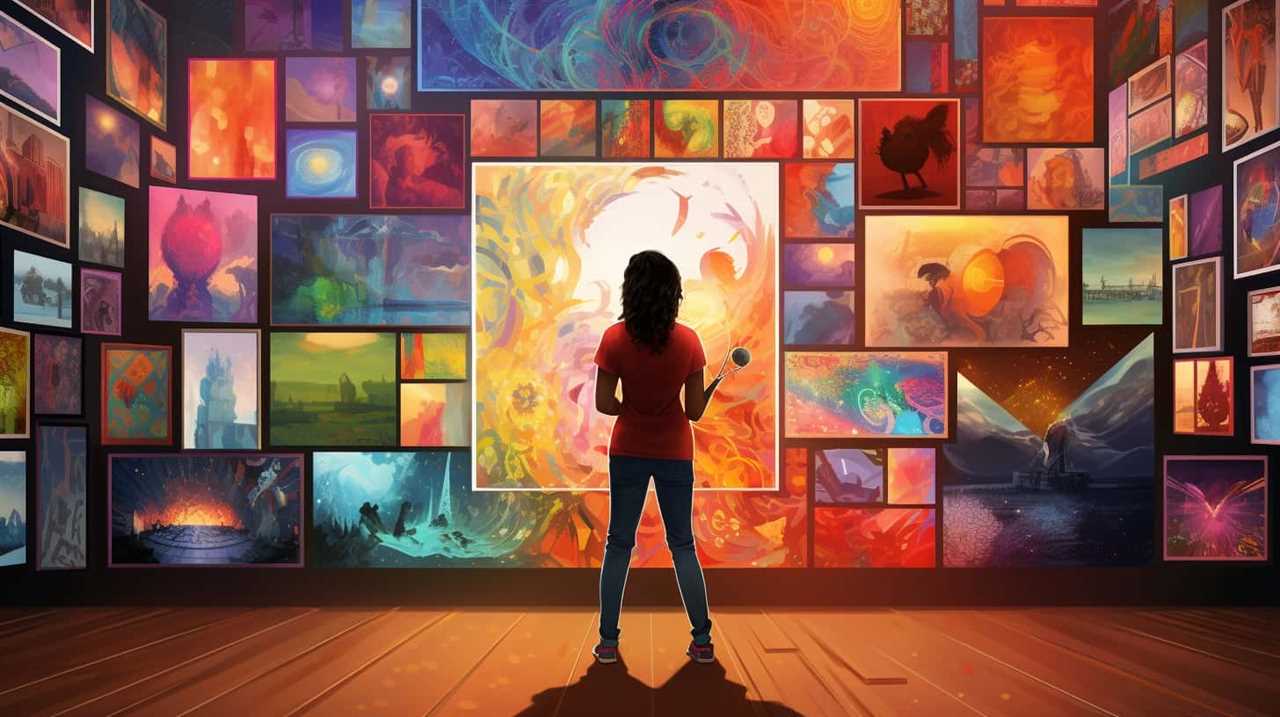
This leads us to explore the impact of visual storytelling in the next section.
Impact of Visual Storytelling
Visual storytelling has a profound impact on our collective understanding and empowers us through the artistic expression of creatives like Shirin Neshat. The power of narrative in visual storytelling allows us to connect with the experiences of others, challenge societal norms, and inspire change.
Through her thought-provoking photographs and films, Neshat creates a space for marginalized voices to be heard and empowers individuals to question the status quo. Her work explores themes of identity, gender, and cultural displacement, shedding light on the complexities of the human experience.
Neshat’s artistry encourages us to confront social injustices and envision a more inclusive and liberated world. By using visual storytelling as a tool for empowerment, Neshat invites us to actively engage in the transformative power of art and create meaningful change in society.

Jenny Holzer: Challenging Societal Norms
How does Jenny Holzer challenge societal norms through her creative work?
Jenny Holzer is a renowned artist who fearlessly challenges gender stereotypes and breaks artistic boundaries in her thought-provoking creations. Here are three ways in which she challenges societal norms:
- Text-based Art: Holzer incorporates powerful statements and phrases in her artwork, using mediums such as LED signs and projections. By bringing attention to social issues and questioning prevailing norms, she encourages viewers to challenge their own beliefs and perceptions.
- Public Spaces: Holzer displays her artwork in public spaces, disrupting the traditional art gallery setting. By placing her thought-provoking messages in unexpected locations, she challenges the notion that art should be confined to a specific space or audience.
- Collaboration: Holzer collaborates with diverse individuals and communities to amplify marginalized voices and experiences. By giving a platform to those who are often silenced, she challenges the dominant narrative and empowers others to do the same.
Through her artistic expression, Jenny Holzer challenges societal norms, encourages critical thinking, and promotes liberation. Her work sets the stage for the subsequent discussion about Cindy Sherman’s exploration of identity and authenticity.
Now, let’s delve into the world of Cindy Sherman and how she embraces identity and authenticity.
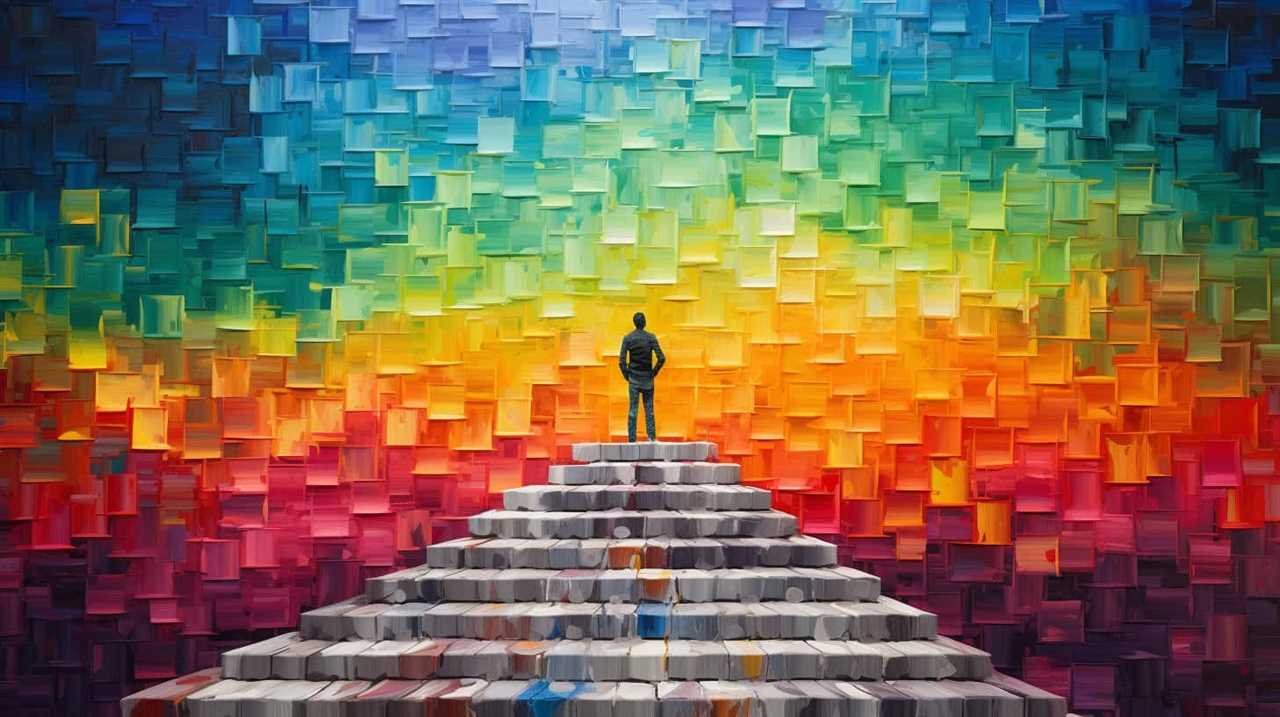
Cindy Sherman: Embracing Identity and Authenticity
Cindy Sherman’s transformative self-portraits have become iconic in the art world. Through her work, she pushes boundaries and challenges societal expectations. She embraces her identity and authenticity, fearlessly exploring different personas and roles.
Sherman’s ability to redefine herself in each photograph inspires us to question the notion of fixed identity. Her work encourages us to embrace our own individuality.
Sherman’s Transformative Self-Portraits
Sherman’s transformative self-portraits captivate with their exploration of identity and authenticity. Through her art, she delves into the depths of self-reflection, allowing viewers to question their own perceptions of themselves. Her work challenges societal expectations and redefines self-perception in the following ways:
- Exploring Different Identities: Sherman’s photographs showcase a range of characters, each with their own unique story and identity. She encourages us to embrace the multitude of selves that exist within us.
- Breaking Stereotypes: By stepping into various roles and personas, Sherman dismantles societal stereotypes and challenges the limitations placed on individuals based on gender, age, and appearance.
- Confronting Authenticity: Sherman’s self-portraits force us to confront the notion of authenticity. She questions what it means to be true to oneself in a world that often imposes expectations and masks.
Sherman’s transformative self-portraits open up a world of self-exploration and liberation, inviting us to challenge societal expectations and embrace our true identities.
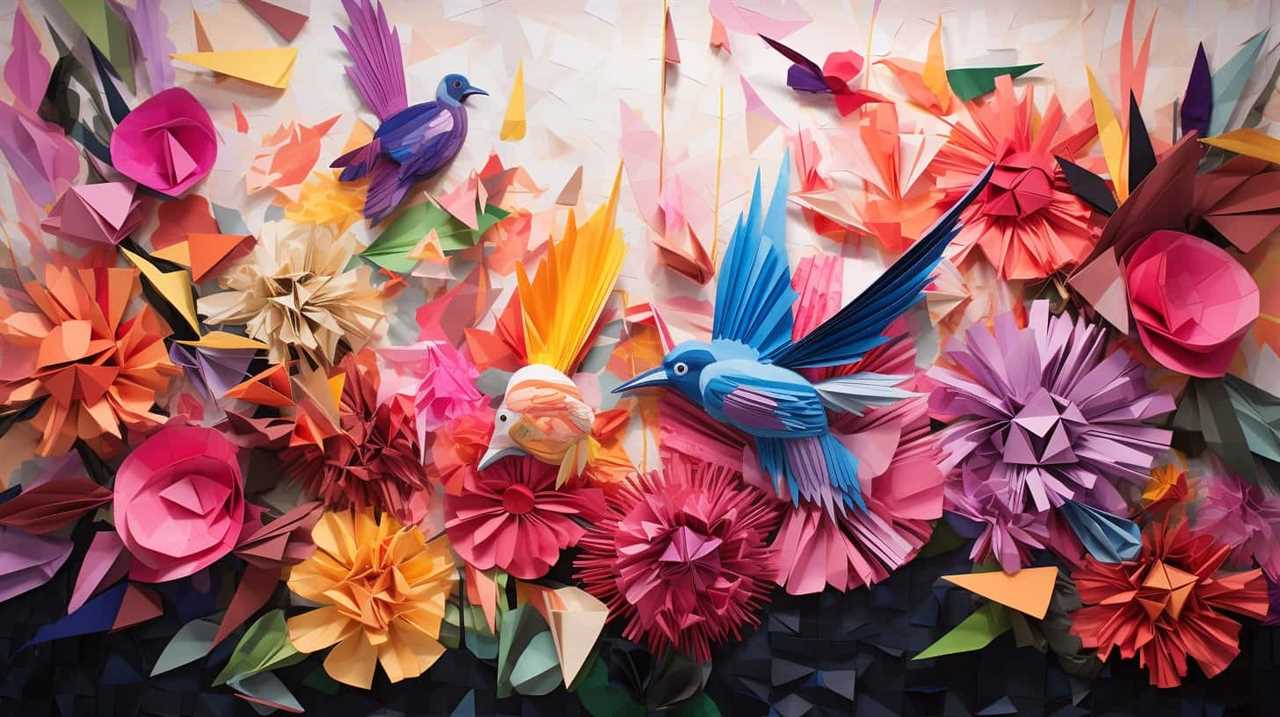
Challenging Societal Expectations
Continuing the exploration of identity and authenticity, we challenge societal expectations by embracing our true identities and confronting the limitations imposed on us. Breaking stereotypes and empowering individuality are crucial in our quest for liberation.
Cindy Sherman, through her transformative self-portraits, exemplifies this defiance against societal norms. By using her photographs to challenge and subvert conventional notions of femininity, she encourages us to question and redefine how we perceive ourselves and others. Sherman’s work serves as a powerful reminder that we’ve the agency to shape our own identities and challenge the boxes that society tries to place us in.
As we delve into the next section about Marina Abramović and her boundary-pushing art, we continue to explore the ways in which artists challenge societal expectations and redefine the boundaries of creativity.
Marina Abramović: Pushing Boundaries and Redefining Art
How does Marina Abramović push boundaries and redefine art?

Marina Abramović is a renowned performance artist who continuously challenges the limits of human endurance and redefines the boundaries of art. Here are three ways she accomplishes this:
- Physical and Emotional Limits: Abramović’s performances often involve intense physical and emotional experiences that push the boundaries of what the human body and mind can endure. Through her endurance-based works, she forces viewers to confront their own limitations and question societal expectations of art.
- Audience Participation: Abramović actively involves the audience in her performances, blurring the line between artist and spectator. By breaking down this traditional barrier, she challenges the notion of passive observation and encourages active engagement, allowing viewers to become co-creators in the artistic experience.
- Provocation and Controversy: Abramović’s work often sparks controversy and challenges societal norms. Through her provocative and boundary-pushing performances, she forces us to question established conventions and confront uncomfortable truths. By pushing these boundaries, she opens up new possibilities for artistic expression and challenges the status quo.
Marina Abramović’s fearless exploration of boundaries in performance and her relentless efforts to redefine art through endurance have made her an influential figure in the art world, inspiring countless artists to push their own boundaries and break free from limitations.
Tracey Emin: Celebrating the Strength of Vulnerability
Tracey Emin’s celebration of the strength of vulnerability is a powerful testament to our collective ability to embrace and overcome our own weaknesses. She reminds us that there’s strength in vulnerability, and that by embracing our imperfections, we can find liberation and empowerment.
Emin’s artwork often delves into deeply personal experiences and emotions, exposing her vulnerabilities to the world. Through her honesty and openness, she challenges societal norms and expectations, encouraging us to do the same. She shows us that vulnerability isn’t a weakness, but a source of strength and authenticity.
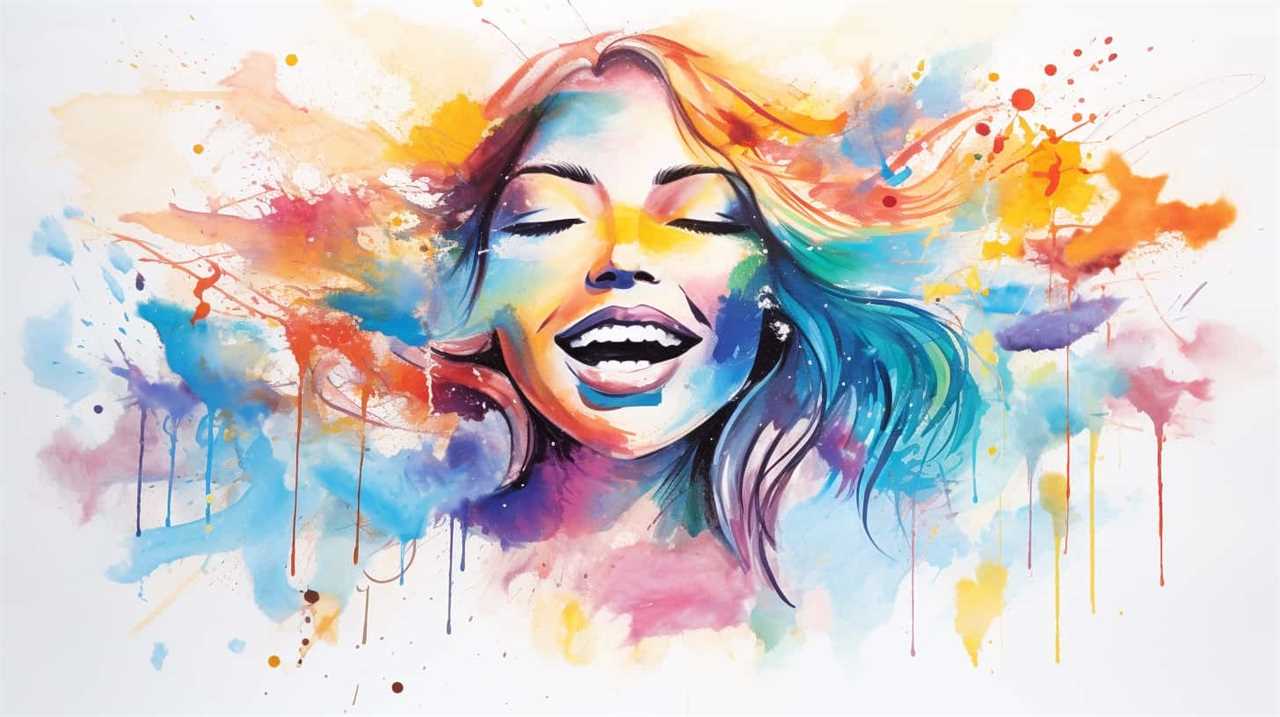
By embracing our imperfections, we can break free from the constraints of perfectionism and societal pressure. Emin’s work encourages us to be unapologetically ourselves, to embrace our flaws and vulnerabilities, and to celebrate our unique journeys.
In a world that often prizes strength and invulnerability, Emin’s celebration of vulnerability is a radical act of self-acceptance. It reminds us that we’re all human, with our own struggles and weaknesses. And by embracing these aspects of ourselves, we can find the strength to overcome obstacles, grow, and thrive.
Emin’s message is clear: our vulnerabilities don’t define us; they empower us. They allow us to connect with others on a deeper level and to embrace our own humanity. Through her art, Emin encourages us to embrace vulnerability as a source of strength and liberation.
Frequently Asked Questions
What Is Yayoi Kusama’s Background and How Did She Become a Successful Artist?
Yayoi Kusama’s journey to success was shaped by her unique background and artistic vision. Her innovative approach to art and exploration of themes like mental health and feminism have had a profound influence on contemporary art.
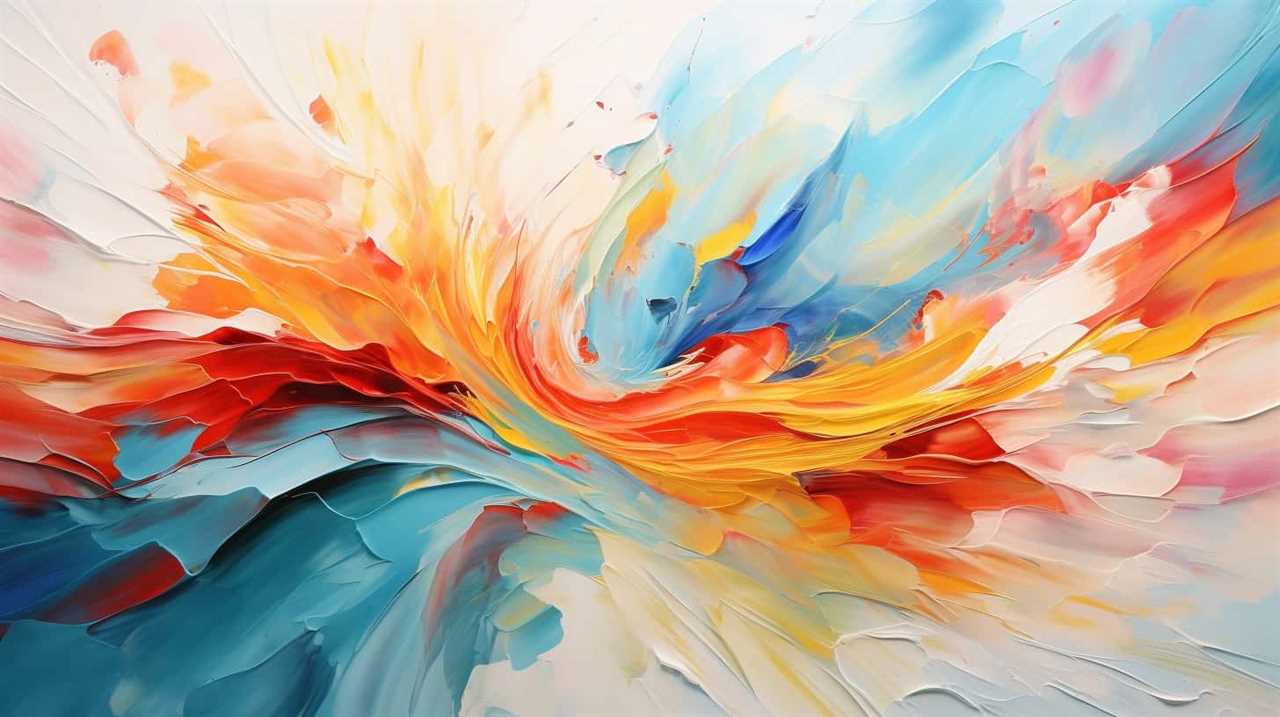
Are There Any Specific Themes or Messages That Kara Walker Explores in Her Artwork?
Kara Walker’s artwork delves into the exploration of race and history, as well as the examination of power dynamics and stereotypes. Her thought-provoking pieces challenge societal norms and invite us to question the narratives we’ve been taught.
How Does Shirin Neshat Use Her Artistic Expression to Empower Women?
Shirin Neshat’s artistic expression is a powerful tool for empowering women. Her work challenges societal norms and amplifies the voices of women, inspiring a sense of liberation and strength. The impact of Neshat’s art on female empowerment is profound and transformative.
What Societal Norms Does Jenny Holzer Challenge Through Her Artwork?
Jenny Holzer’s artwork challenges societal norms by questioning gender expectations and authority figures. Through her powerful words and thought-provoking installations, she encourages us to question and challenge the status quo.
How Does Cindy Sherman’s Work Reflect Her Exploration of Identity and Authenticity?
Cindy Sherman’s work reflects her exploration of self and feminine identity. Through her photographs, she challenges societal norms and questions the authenticity of identity. Her art invites us to question and liberate ourselves.
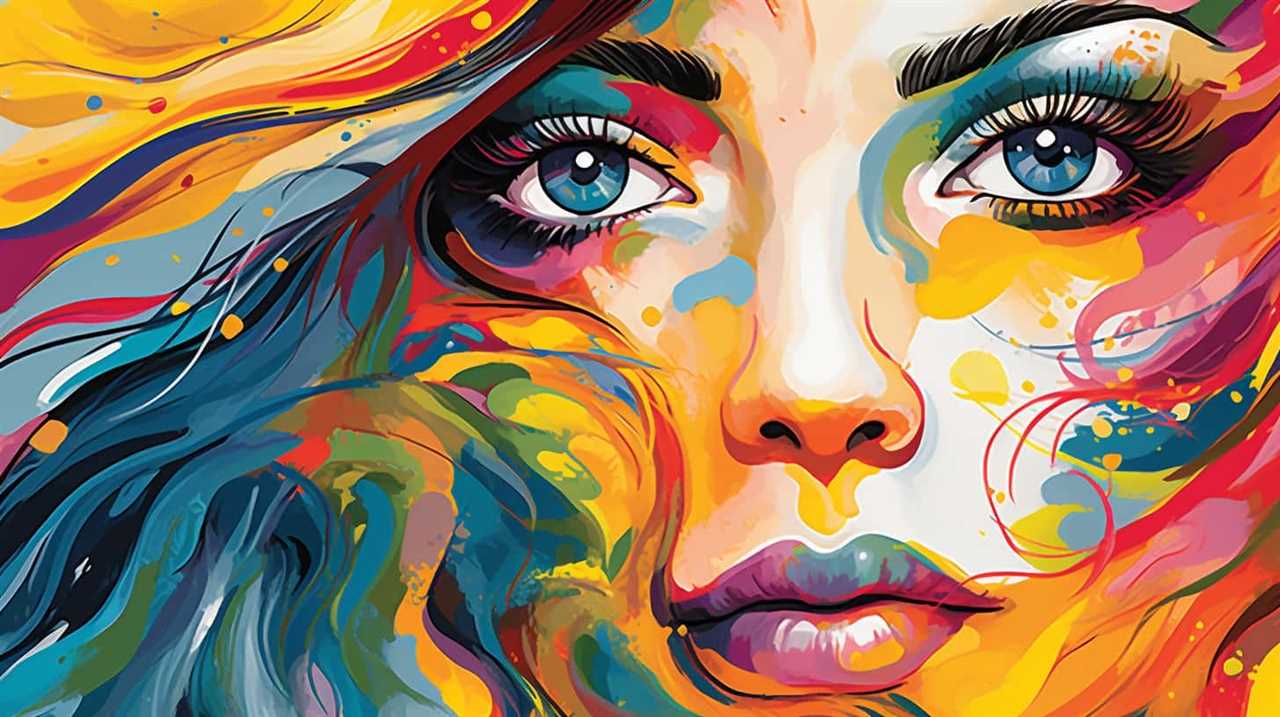
Conclusion
These empowering quotes by today’s female creatives remind us of the infinite potential we possess and the power of artistic expression. They challenge societal norms, celebrate vulnerability, and push boundaries to redefine art.
Through their work, Yayoi Kusama, Kara Walker, Shirin Neshat, Jenny Holzer, Cindy Sherman, Marina Abramović, and Tracey Emin inspire us to embrace our identity, authenticity, and strength.
Their words and art serve as a powerful reminder that we’ve the ability to shape our own narratives and make a difference in the world.
Lauren’s talent in writing is matched by her passion for storytelling. Her love for books and deep understanding of culture and entertainment add a distinct flavor to her work. As our media and press contact, Lauren skillfully bridges the gap between afterQuotes and the broader media landscape, bringing our message to a wider audience.
Art and Creativity Quotations
Feminist Artists Speak: Quotes on Social Issues

At Feminist Artists Speak: Quotes on Social Issues, we firmly believe in the ability of art to challenge and reform society. By highlighting the viewpoints of feminist artists, we explore a range of social issues affecting women and marginalized communities.
From the eloquent words of Frida Kahlo, who said, ‘I paint my own reality,’ to the bold statements of Guerrilla Girls, who demand gender equality in the art world, we celebrate the diversity and strength of feminist art.
Our collection of quotes delves into topics such as breaking gender stereotypes, addressing violence against women, and reclaiming female identity.
Join us as we use art as a tool for social change and empower women through artistic expression.
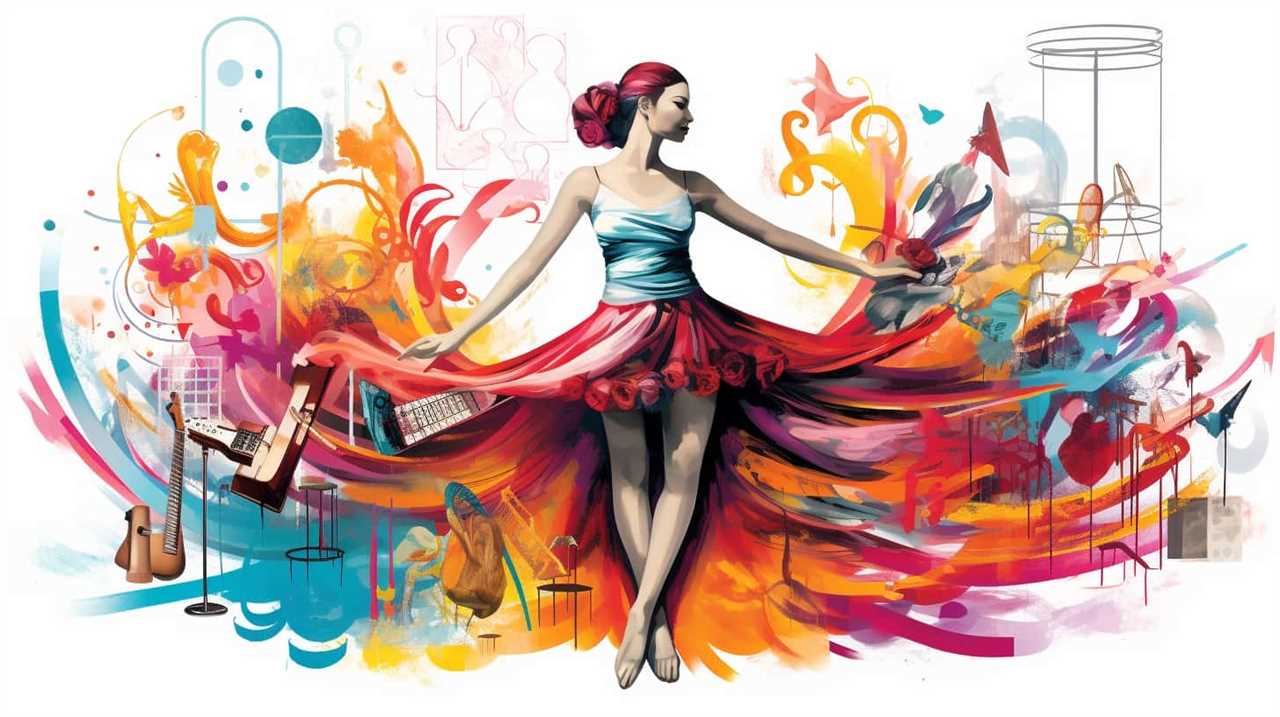
Key Takeaways
- Feminist artists use their art to challenge traditional norms and expose the flaws and limitations of social constructs.
- Artwork breaks the mold of traditional gender roles and embraces gender fluidity, emphasizing the importance of intersectionality.
- Feminist artists shed light on the ways in which patriarchy marginalizes women and actively contribute to the fight for gender equality.
- Through their art, feminist artists amplify marginalized voices, subvert gender stereotypes, and critique power dynamics in patriarchal systems.
The Power of Artistic Expression
Artistic expression holds immense power in shaping societal perspectives and challenging the status quo. Through artistic innovation, artists have the ability to explore and dismantle social constructs that perpetuate inequality and oppression. Art has the potential to provoke thought, evoke emotions, and initiate important conversations that can lead to societal change.
Artistic innovation allows artists to push boundaries and challenge traditional norms, providing a fresh perspective on social issues. By using various mediums such as painting, sculpture, photography, and performance art, artists can convey powerful messages that resonate with individuals on a deep level. Through their work, they can shed light on the complexities of social constructs, exposing their flaws and limitations.
Exploring social constructs through art can bring attention to issues such as gender inequality, racism, and systemic injustice. It allows for a critical examination of societal norms and expectations, encouraging individuals to question and challenge the established order. By presenting alternative narratives and perspectives, artists can inspire viewers to think differently and consider new possibilities.
As we delve into the subsequent section on ‘breaking gender stereotypes’, it’s important to recognize that artistic expression plays a crucial role in dismantling these harmful stereotypes. Through art, artists can challenge gender norms, defy societal expectations, and empower individuals to embrace their authentic selves. Artistic expression has the power to liberate individuals from the confines of gender roles and foster a more inclusive and equitable society.

Breaking Gender Stereotypes
Through our artwork, we aim to challenge and dismantle gender stereotypes that perpetuate inequality and limit individual expression. In redefining masculinity and promoting gender equality, we strive to create a world where all individuals can freely express themselves without the constraints of societal expectations.
- Breaking the Mold: Our artwork seeks to break the mold of traditional gender roles, showcasing individuals who defy stereotypes and embrace their authentic selves. By challenging the notion that masculinity is synonymous with aggression and dominance, we encourage a more inclusive and diverse understanding of what it means to be a man.
- Embracing Fluidity: We celebrate the beauty of gender fluidity and reject the binary concept of gender. Our artwork explores the idea that gender isn’t fixed, but rather a spectrum that allows for endless possibilities of self-identification. By embracing gender fluidity, we challenge the rigid norms that confine individuals to predetermined roles based on their assigned sex.
- Intersectionality Matters: Recognizing the interconnected nature of social identities, we emphasize the importance of addressing gender stereotypes within the context of race, class, sexuality, and other intersecting factors. By acknowledging the unique experiences of individuals who face multiple forms of discrimination, we strive to create a more inclusive and equitable society.
- Empowering through Representation: By depicting diverse and empowered characters in our artwork, we aim to inspire and uplift marginalized communities. Through positive representation, we challenge the harmful stereotypes that have historically marginalized and silenced individuals based on their gender identity. Our art aims to provide a platform for marginalized voices and promote a more inclusive understanding of gender.
Challenging Patriarchal Norms
When it comes to challenging patriarchal norms, feminist artists have played a crucial role in disrupting traditional power structures and advocating for gender equality.
Through their art, they’ve confronted and critiqued the oppressive systems that perpetuate patriarchy, shedding light on the ways in which it marginalizes and suppresses women.
Feminist Art Impact
How can feminist artists actively challenge patriarchal norms through their work?

Feminist art impact goes beyond creating aesthetically pleasing pieces; it’s about promoting inclusivity and challenging the status quo. Here are some ways feminist artists can achieve this:
- Using their art to amplify marginalized voices, giving them a platform to be heard and seen.
- Subverting traditional gender roles and stereotypes in their work, challenging the binary notion of gender.
- Creating art that addresses and critiques the power dynamics embedded in patriarchal systems.
- Collaborating with other artists and communities to create a collective movement towards liberation.
By actively challenging patriarchal norms through their work, feminist artists contribute to the ongoing fight for gender equality and social justice. Their art has the power to inspire, provoke thought, and ignite change.
Now, let’s delve into the next section about breaking gender stereotypes.
Breaking Gender Stereotypes
What are some effective ways for feminist artists to challenge patriarchal norms and break gender stereotypes?

One powerful approach is promoting inclusivity within their artwork. By featuring a diverse range of identities and experiences, feminist artists can challenge the notion that there’s a singular, dominant narrative of femininity or masculinity.
By showcasing the beauty and strength in all forms of gender expression, these artists redefine masculinity and challenge the narrow expectations placed on individuals based on their gender.
Through their work, feminist artists can inspire viewers to question and challenge societal norms, fostering a more inclusive and accepting society.
Empowering Marginalized Voices?
Feminist artists actively challenge patriarchal norms by empowering marginalized voices and dismantling oppressive systems. They believe in amplifying underrepresented voices and promoting inclusivity and diversity.

Through their art, they aim to create spaces that allow for the expression of diverse experiences and perspectives. By centering the stories of those who’ve historically been silenced or marginalized, feminist artists challenge societal norms and push for a more equitable and just world. They use their platforms to shed light on the experiences of women of color, LGBTQ+ individuals, disabled individuals, and other marginalized groups.
Through their work, they strive to break down the barriers that prevent these voices from being heard and to create a society that values and respects the experiences of all individuals.
Transitioning into the subsequent section about ‘addressing violence against women’, it’s clear that feminist artists play a crucial role in advocating for the rights and safety of all women.
Addressing Violence Against Women
We stand against violence towards women and actively work towards its eradication. Combating domestic violence and promoting a consent culture are crucial aspects of our feminist art movement. Through our artistic expressions, we aim to shed light on the pervasive issue of violence against women and challenge the societal norms that perpetuate it.
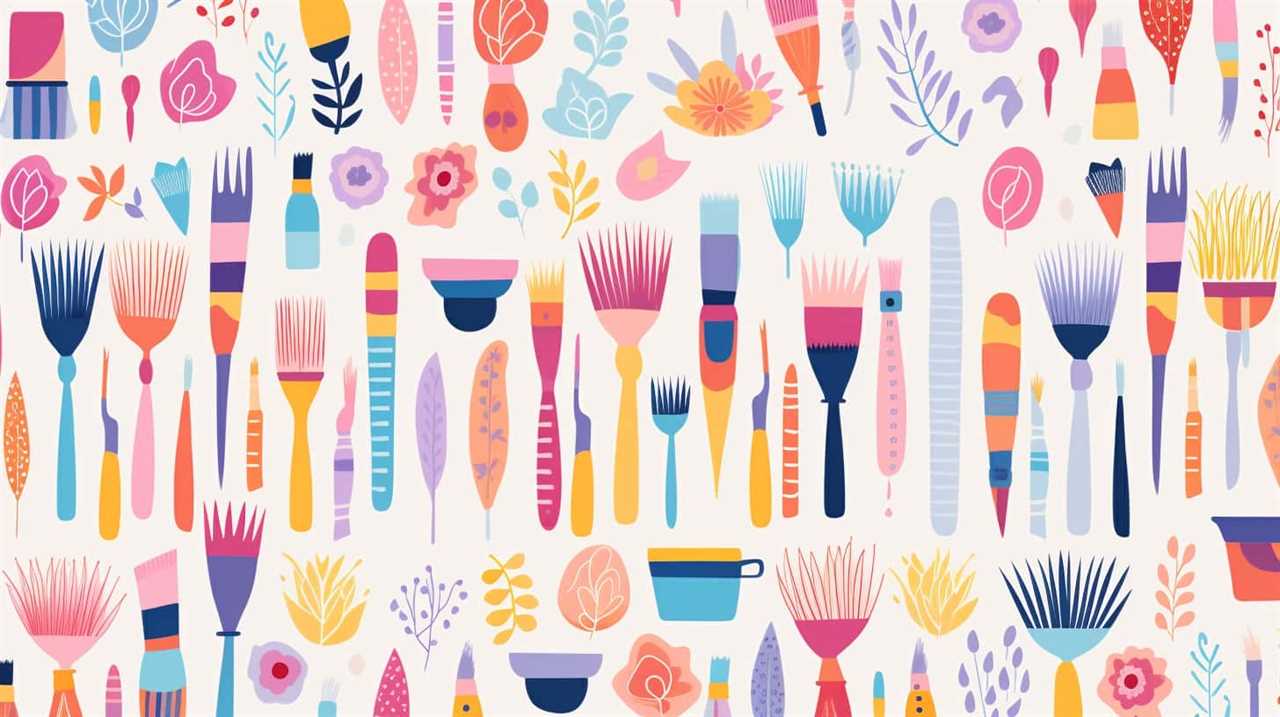
Feminist artists utilize various mediums to address this issue, from visual art and performance to literature and film. By creating thought-provoking pieces that explore the experiences of survivors, we strive to raise awareness and foster empathy. Our art serves as a powerful tool to initiate conversations about the root causes of violence against women and the urgent need for change.
Furthermore, we recognize that violence against women intersects with other forms of oppression, such as racism, ableism, and homophobia. Our art embraces intersectionality, acknowledging the unique experiences and challenges faced by women of different backgrounds. By amplifying their voices and stories, we aim to dismantle the systems of power that perpetuate violence and discrimination.
As feminist artists, we believe that art has the potential to inspire social change and challenge the status quo. By addressing violence against women in our work, we hope to contribute to a world where all women can live free from fear and violence.
In the next section, we’ll examine how feminist art embraces intersectionality and explores the interconnectedness of social issues.

Intersectionality in Feminist Art
As feminist artists, our goal is to explore the interconnectedness of social issues through the lens of intersectionality in our art. We believe that addressing the complexities of gender inequality requires acknowledging and addressing the various intersecting identities and systems of oppression that individuals experience. In our artwork, we strive to amplify the voices of marginalized communities and challenge the traditional narratives that perpetuate discrimination.
To evoke an emotional response from our audience, we incorporate the following elements in our art:
- Racial diversity: We celebrate the beauty and strength of diverse racial backgrounds, recognizing that the struggle for gender equality is intertwined with racial justice. Through our art, we aim to challenge stereotypes and highlight the experiences of women of color.
- LGBTQ+ representation: We believe that the fight for gender equality can’t be separated from the fight for LGBTQ+ rights. Our art seeks to create visibility and representation for queer and transgender individuals, fostering a more inclusive and accepting society.
- Intersectional narratives: We tell stories that reflect the complexity of lived experiences, exploring the intersectionality of race, gender, sexuality, and other identities. By showcasing these narratives, we hope to foster empathy and understanding among our audience.
- Challenging power structures: Our art confronts the power dynamics that contribute to gender inequality and encourages critical reflection. Through visual and conceptual techniques, we aim to provoke thought and inspire action towards dismantling oppressive systems.
Reclaiming Female Identity
In reclaiming our female identity, we strive to redefine societal norms and challenge the expectations placed upon women. Female empowerment is at the heart of this movement, as we seek to dismantle the restrictive constructs that have long confined and limited us. By redefining femininity, we aim to break free from the narrow definitions and stereotypes that have been imposed upon us, allowing us to embrace the full spectrum of our identities and experiences.
This process involves questioning and rejecting the notion that there’s a singular, fixed way to be a woman. We celebrate the diversity and complexity of our experiences, recognizing that there’s no one-size-fits-all definition of femininity. We reject the pressure to conform and instead encourage individuality, authenticity, and self-expression.

Reclaiming our female identity is an act of defiance against the patriarchal systems that seek to control and diminish us. It’s a powerful affirmation of our worth, agency, and autonomy. By challenging societal norms and expectations, we pave the way for a more inclusive and equitable world, where all individuals are free to explore and express their true selves.
As we reclaim and redefine our female identity, we confront the deeply ingrained body image issues that have plagued women for centuries.
Confronting Body Image Issues
Confronting the deeply ingrained body image issues that have plagued women for centuries, we aim to challenge societal standards of beauty and promote self-acceptance. Body positivity and media representation play crucial roles in this ongoing battle. Here are some key aspects to consider:
- Diverse Representation: We demand media to showcase a diverse range of body types, sizes, and shapes. By celebrating all bodies, regardless of societal norms, we break down the harmful notion that there’s only one ‘ideal’ body.
- Challenging Beauty Standards: It’s essential to question and dismantle the unrealistic and unattainable beauty standards imposed on women. We must reject the idea that our worth is determined solely by our appearance.
- Embracing Individuality: Each person is unique, and our bodies tell our stories. By embracing our individuality, we empower ourselves and others to appreciate and love the bodies we inhabit.
- Promoting Self-Acceptance: Body positivity encourages us to accept ourselves as we are, flaws and all. It’s about embracing our bodies with kindness, compassion, and respect, rather than striving for an unattainable perfection.
Confronting body image issues requires us to challenge the status quo, redefine beauty on our own terms, and foster a culture of self-acceptance and liberation. Together, we can create a world where all bodies are celebrated and accepted, free from the constraints of societal expectations.

Art as a Tool for Social Change
Artists have always been at the forefront of using their creative expression as a powerful tool for driving social change. Through their work, they’ve the ability to cultivate empathy and inspire collective action.
Art has the unique ability to communicate complex social issues in a way that resonates with people on a deep emotional level. It can challenge existing norms, provoke thought, and ignite conversations that lead to change.
One way artists achieve this is by cultivating empathy through their art. They’ve the power to create a connection between the viewer and the subject matter, allowing individuals to see the world through someone else’s eyes. By depicting the experiences and struggles of marginalized communities, artists can evoke a sense of empathy in the audience, helping them to understand and relate to the issues at hand.
Another way art drives social change is by inspiring collective action. Art has the power to bring people together, creating a sense of unity and solidarity. When people are moved by a piece of art that addresses a social issue, it can motivate them to take action, whether it be through participating in protests, signing petitions, or engaging in meaningful conversations.
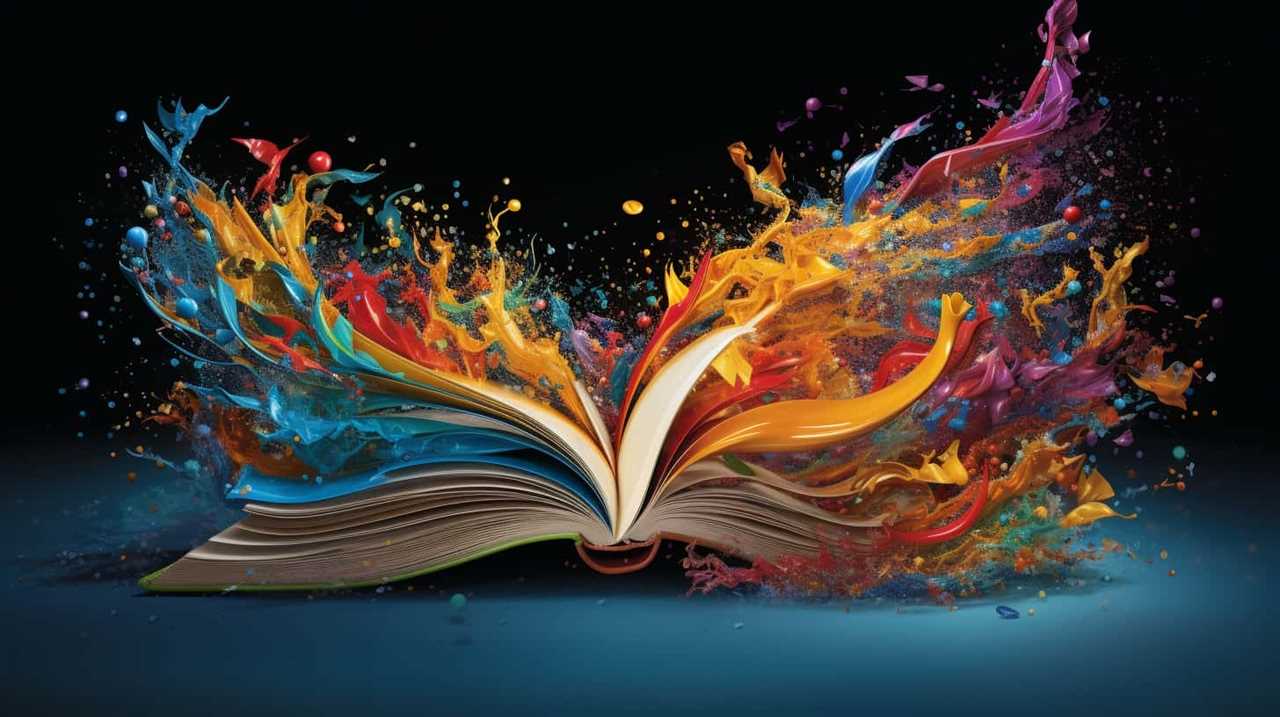
Artists have a responsibility to use their platform to address social issues and spark change. Through their creativity and activism, they’ve the power to shape the world we live in and create a better future for all.
Empowering Women Through Art
How can feminist artists empower women through their art?
Feminist artists have the power to empower women through their art by challenging traditional notions of female representation and advocating for gender equality. Through their work, they can inspire women to embrace their strength, celebrate their bodies, and reclaim their identities.
Here are four ways in which feminist artists can empower women through their art:

- Representation: By creating art that showcases diverse and authentic representations of women, feminist artists can challenge the limited and often objectifying portrayals that dominate mainstream media. This can help women feel seen, valued, and validated.
- Visibility: Feminist artists can use their platforms to amplify the voices and stories of marginalized women, highlighting their experiences and struggles. This increased visibility can foster empathy, understanding, and solidarity among women.
- Reclamation: Through their art, feminist artists can encourage women to reclaim their bodies, their sexuality, and their autonomy. By challenging societal expectations and norms, they can empower women to embrace their desires, choices, and agency.
- Education: Feminist artists can use their art to educate and inform others about the importance of gender equality. Through their work, they can raise awareness about the systemic barriers that women face and inspire action towards a more just and equitable society.
Through their art, feminist artists have the potential to ignite change, challenge the status quo, and empower women to embrace their power and worth. By creating spaces and narratives that celebrate female representation and advocate for gender equality, they can inspire women to break free from societal constraints and strive for liberation.
Frequently Asked Questions
How Can Feminist Art Contribute to Addressing Intersectionality and Inclusivity in Society?
Exploring intersectionality in feminist art allows us to understand and challenge the interconnected systems of oppression. Art serves as a catalyst for inclusivity and social change by amplifying marginalized voices and dismantling power structures.
What Are Some Examples of Feminist Art That Have Successfully Challenged Patriarchal Norms?
Feminist art has successfully challenged patriarchal norms by exploring themes of resistance and empowerment. It has examined traditional gender roles, sparking conversations and driving societal change. Through creativity, we dismantle the status quo.
How Does the Use of Art as a Tool for Social Change Empower Women in Their Fight for Gender Equality?
Artistic expression has the power to amplify women’s voices and challenge societal norms. Through art, women can reclaim their stories, challenge stereotypes, and inspire others to join the fight for gender equality.
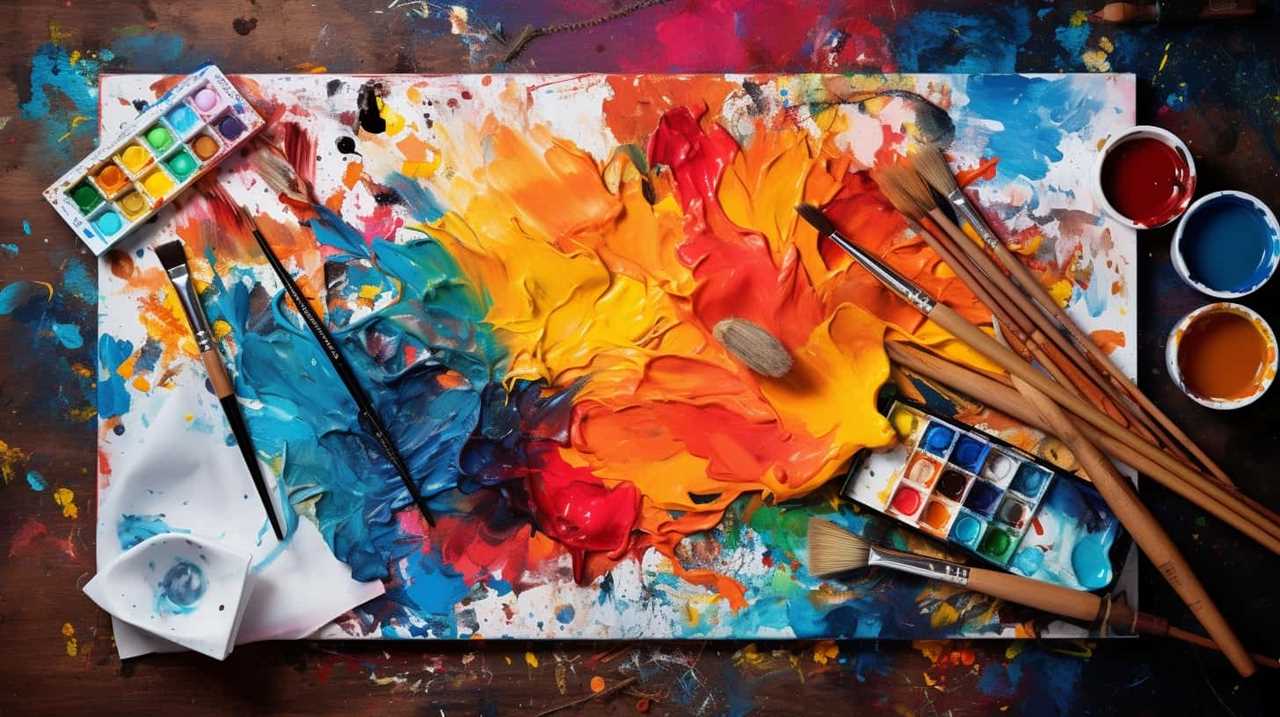
In What Ways Does Feminist Art Help in Reclaiming and Redefining Female Identity?
Feminist art plays a crucial role in reclaiming and redefining female identity by challenging societal norms and exploring gender stereotypes. It empowers women to embrace their own narratives and redefine female sexuality on their own terms.
Can You Provide Some Insights Into the Role of Feminist Art in Addressing and Raising Awareness About Violence Against Women?
Feminist art plays a crucial role in promoting gender equality and raising awareness about violence against women. Through its powerful visual imagery and thought-provoking messages, it acts as a form of resistance, challenging societal norms and advocating for change.
Conclusion
In conclusion, feminist artists have used their artwork as a powerful tool to challenge societal norms and advocate for social change.
One interesting statistic that highlights the impact of their work is that over 70% of women who view feminist art report feeling empowered and inspired to challenge gender inequality in their own lives.

Through their creative expression, these artists have sparked conversations, shattered stereotypes, and paved the way for a more inclusive and equitable society.
Lauren’s talent in writing is matched by her passion for storytelling. Her love for books and deep understanding of culture and entertainment add a distinct flavor to her work. As our media and press contact, Lauren skillfully bridges the gap between afterQuotes and the broader media landscape, bringing our message to a wider audience.
Art and Creativity Quotations
13 Voices: Shaping Society Through Visual Expression

At 13 Voices: Shaping Society Through Visual Expression, we empower ourselves and others by harnessing the power of art to create change. By uniting our voices, we challenge societal standards, ignite conversations, and inspire transformation.
Take, for instance, the powerful artwork of Banksy, whose thought-provoking street art confronts social and political issues head-on. We believe that art has the ability to challenge, critique, and reshape society, serving as a catalyst for liberation.
By visually expressing our thoughts and emotions, we break free from societal constraints and redefine cultural norms. Art has the unique power to reflect and challenge the values of our society, shedding light on injustices and sparking movements for social justice.
Join us as we explore the limitless potential of contemporary art to shape a more inclusive and liberated world.
Key Takeaways
- Visual storytelling and impactful visuals have the power to transform society by challenging norms, sparking conversations, and inspiring change.
- Art plays a significant role in driving social transformation by challenging societal norms, provoking thought, and inspiring action.
- Creative expression contributes to social transformation by engaging with social and political issues in an accessible and relatable way.
- Visual communication has the power to catalyze change in society by evoking emotions, challenging norms, and provoking critical thinking.
The Power of Visual Expression
How can visual expression shape society and wield its power?
Visual storytelling and impactful visuals have the potential to transform society by challenging norms, sparking conversations, and inspiring change. Through the use of images, we can convey complex narratives and evoke emotions that words alone may struggle to capture.
Visual storytelling has the ability to bridge gaps, break down barriers, and foster empathy. When we see powerful images, they’ve the capacity to transcend language and cultural differences, allowing us to connect on a fundamental level. It’s through this connection that societal change can occur. Impactful visuals possess the ability to amplify voices that have been marginalized, providing a platform for those whose stories have often been silenced.
Moreover, impactful visuals have the power to disrupt dominant narratives and challenge the status quo. By presenting alternative perspectives and shining a light on injustices, visual expression can expose the hidden truths that have perpetuated oppressive systems. In doing so, it can empower individuals and communities to question existing power structures and advocate for a more just and equitable society.
Visual expression isn’t only a tool for communication but also a catalyst for liberation. It has the power to ignite social movements, inspire activism, and mobilize communities. Through the lens of visual storytelling, we can reshape the narratives that shape our society and create a more inclusive and equitable world.
The power of visual expression lies in its ability to transcend words, provoke emotions, and ignite change.
Art as a Catalyst for Change
Art has always played a significant role in driving social transformation. Through the power of visual communication, artists have the ability to challenge societal norms, provoke thought, and inspire action.
Art has the potential to ignite a sense of activism, encouraging individuals to question the status quo and work towards positive change.

Art and Social Transformation
By harnessing the power of creative expression, we can actively contribute to social transformation and drive change in our communities.
Artistic activism and visual storytelling have emerged as powerful tools for liberation and social change.
Through art, we’re able to challenge norms and bring attention to critical issues that impact our society.
Artistic activism allows us to engage with complex social and political issues in a way that’s accessible and relatable to a wide audience.
Visual storytelling, on the other hand, has the ability to evoke emotions and create empathy, driving viewers to take action.
Power of Visual Communication
Through our use of visual communication, we’ve the power to catalyze change in society. Visual storytelling has the ability to evoke emotions, challenge norms, and provoke critical thinking.
The impact of imagery is undeniable, as it has the potential to shape public opinion, challenge oppressive systems, and inspire collective action. Art, as a catalyst for change, has the ability to break through barriers and reach a wider audience.
By utilizing visual communication, we can give a voice to the marginalized, expose social injustices, and advocate for equality and liberation. The power of visual communication lies in its ability to transcend language barriers and connect people on a universal level.
Through powerful and thought-provoking imagery, we can challenge the status quo and ignite a revolution of change.
Inspiring Activism Through Art
As advocates for social change, we can use art to ignite activism and inspire collective action.
Artistic activism, also known as visual protest, harnesses the power of artistic expression to challenge societal norms and advocate for justice.
Through bold and thought-provoking imagery, artists can evoke strong emotions and convey powerful messages that resonate with the audience.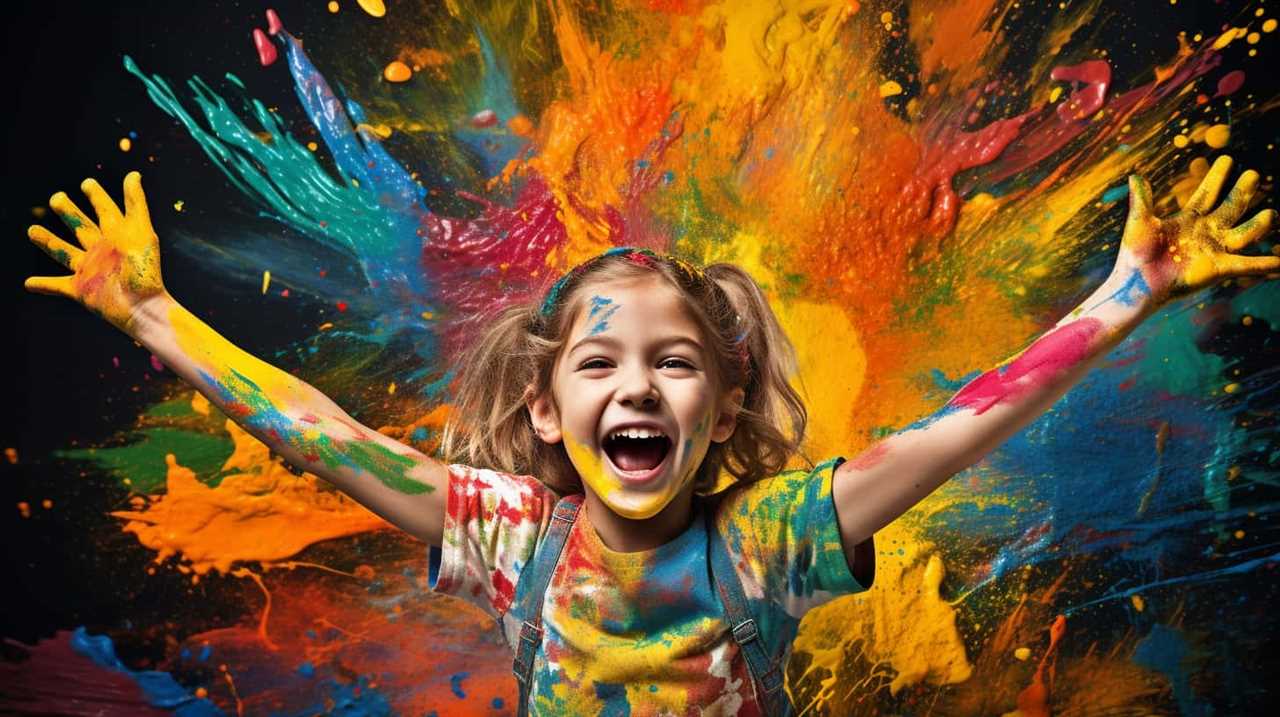
Art has the ability to transcend language and cultural barriers, making it a universal medium for inspiring change.
By creating visual representations of social issues, artists can raise awareness, spark dialogue, and mobilize communities to take action.
Whether it’s through street art, murals, or performance art, artistic activism has the potential to disrupt the status quo, challenge oppressive systems, and pave the way for a more just and equitable society.
Critiquing Society Through Art
We, as artists, have the power to shed light on societal issues and provoke critical reflection with our visual expressions. Through our art, we’re able to challenge and critique societal norms, exposing the flaws and injustices that often go unnoticed. By exploring artistic expression, we can push the boundaries of what’s considered acceptable and challenge the status quo.
Art has always been a powerful tool for social commentary, allowing us to communicate complex ideas and emotions in a way that transcends language barriers. It provides a platform for marginalized voices to be heard, bringing attention to the struggles and inequalities faced by various communities.
In critiquing society through art, we aim to spark conversations, challenge preconceived notions, and provoke thought. By presenting alternate perspectives and highlighting the contradictions within our social structures, we encourage viewers to question the world around them and examine their own beliefs and biases. Through our art, we strive to create a space for dialogue and collective reflection, fostering a deeper understanding of societal issues and the need for change.
As we delve into the influence of art on social movements, we must recognize the power that art holds in mobilizing communities and effecting real change. Art has the ability to unite people, galvanizing them to take action and fight for justice. Whether it’s through powerful visual imagery, thought-provoking installations, or compelling performances, art serves as a catalyst for social transformation.
It has the ability to inspire and empower individuals, igniting a sense of urgency and activism within society. Art has the potential to shape the narrative, challenge oppressive systems, and ultimately, create a more liberated and equitable world.
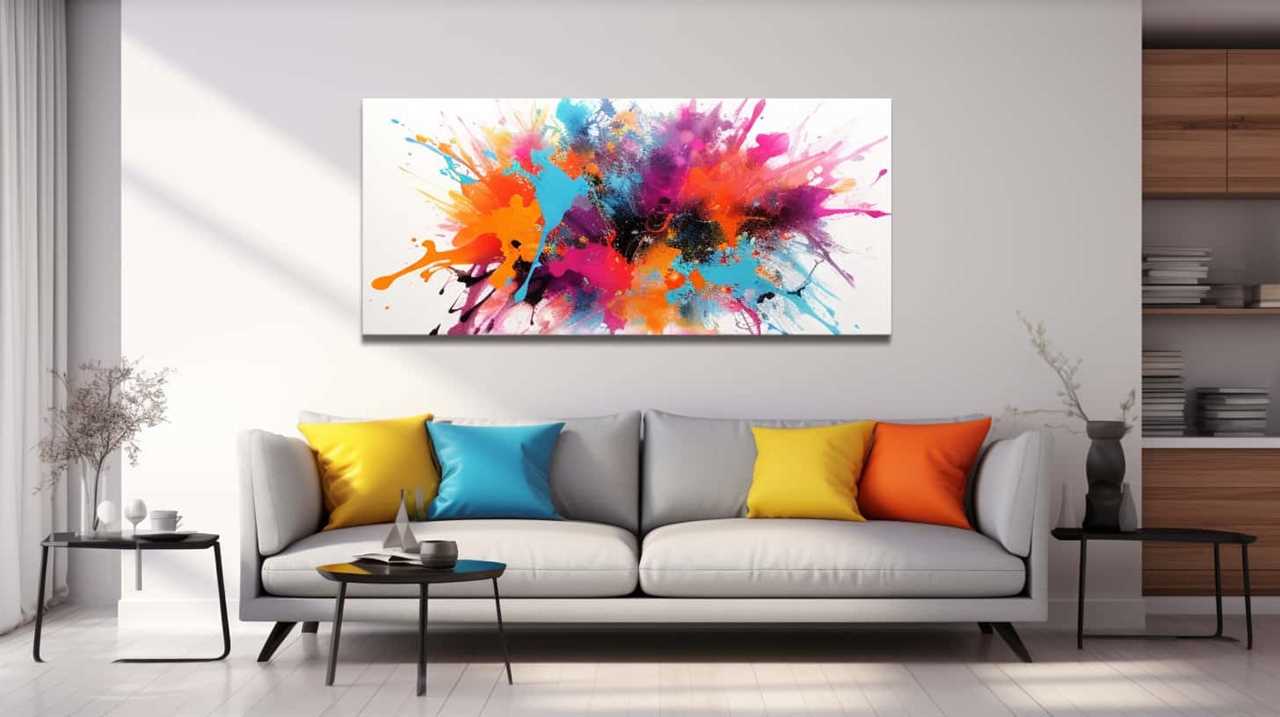
Art’s Influence on Social Movements
Artists have harnessed the power of visual expression to shape and propel social movements. Art’s impact on social movements can’t be understated. Throughout history, artists have played a significant role in advocating for social change and challenging the status quo. By using their artistic talents and creativity, artists have become activists, using their work to raise awareness, provoke thought, and inspire action.
Art has the unique ability to transcend language barriers and connect with people on a deeper emotional level. It has the power to evoke strong emotions, spark conversations, and challenge societal norms. Artists as activists have used their platforms to shed light on important social issues such as racism, inequality, and environmental degradation. Through their art, they create a space for dialogue and reflection, encouraging viewers to question the world around them and envision a better future.
Artists as activists have the power to amplify marginalized voices and bring attention to social injustices. They challenge the dominant narratives and offer alternative perspectives, pushing for social change. By using their art as a form of protest, they not only express their dissent but also mobilize communities and galvanize movements.
Redefining Cultural Norms Through Art
While art’s impact on social movements has been significant, it also has the power to redefine cultural norms through visual expression. Artistic rebellion and cultural revolution go hand in hand when it comes to challenging societal norms and expectations.
Through art, individuals and communities can push the boundaries of what’s considered acceptable, opening up new possibilities for self-expression and liberation.
Here are five ways in which art can redefine cultural norms:
- Breaking stereotypes: Art has the ability to challenge stereotypes and dismantle oppressive narratives, allowing marginalized voices to be heard and seen.
- Broadening perspectives: Art can expand people’s understanding of different cultures, challenging ethnocentrism and promoting cultural diversity and inclusivity.
- Questioning gender norms: Artists have the power to challenge traditional gender roles and norms, encouraging a more fluid and inclusive understanding of gender identity.
- Addressing taboo subjects: Art can provide a platform for discussing taboo subjects such as mental health, sexuality, and politics, bringing them to the forefront of public discourse.
- Fostering empathy: Through visual expression, art can evoke emotions and promote empathy, encouraging individuals to see the world through different lenses and challenge their own biases.
Through artistic rebellion and cultural revolution, art has the potential to reshape society’s understanding of cultural norms, creating a more inclusive and liberated world.
Art’s Role in Challenging Injustice
Art plays a pivotal role in challenging injustice through visual expression. It has long been recognized as a powerful tool for social change, serving as a catalyst for political activism and a medium through which marginalized voices can be heard. Art has the ability to transcend language barriers and evoke emotional responses, making it an effective means of raising awareness and inciting action against injustice.
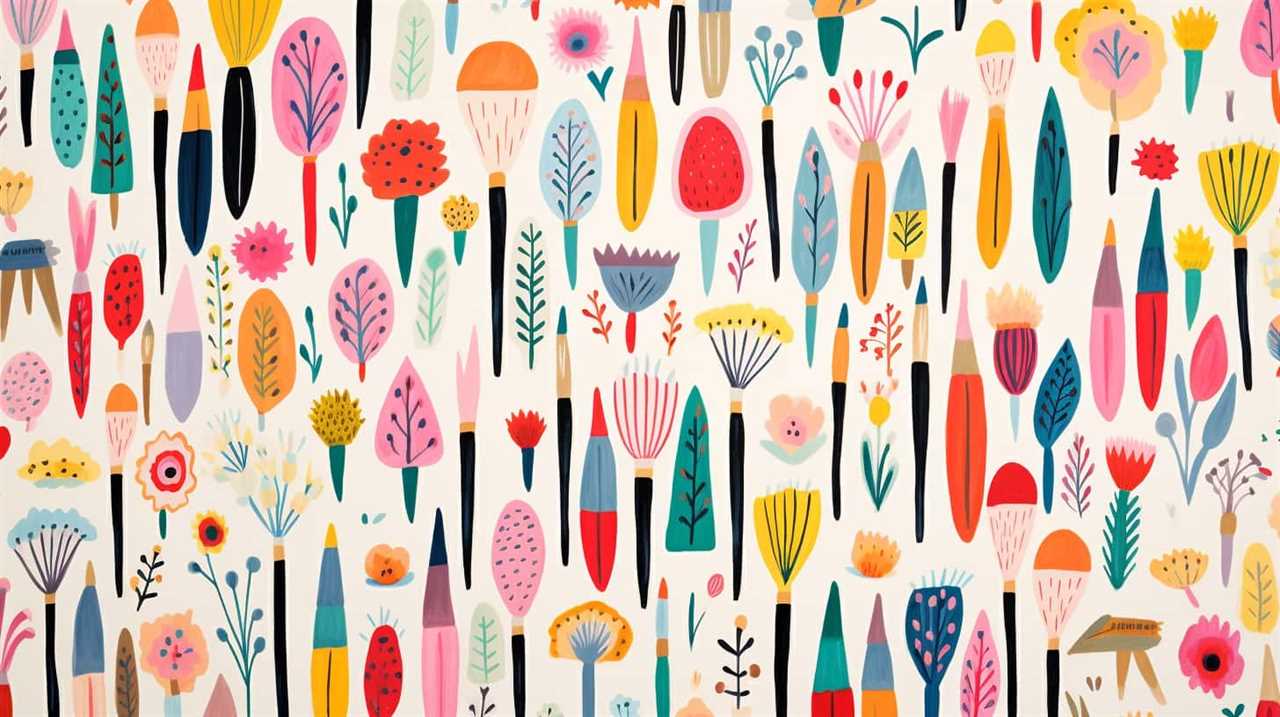
Artists have historically used their work to address pressing social issues and advocate for change. From the civil rights movement to the feminist movement, art has played a significant role in shaping public opinion and pushing for progress. Whether through paintings, sculptures, or photography, artists have the unique ability to convey messages that challenge societal norms and question existing power structures.
Art as a tool for social justice allows individuals to express their experiences, frustrations, and aspirations in a way that resonates with others. By visually representing the injustices they face, artists can evoke empathy and inspire collective action. Through their work, they can shed light on systemic inequalities and give voice to those who’ve been silenced.
Art as a Reflection of Societal Values
To truly understand the impact of visual expression on society, it’s important to recognize how art serves as a mirror reflecting our collective values. Artistic interpretation allows artists to delve into the depths of societal commentary, offering insights and critiques that challenge the status quo. Through their work, artists can hold up a mirror to society, reflecting its values, beliefs, and aspirations.
Here are five ways in which art serves as a reflection of societal values: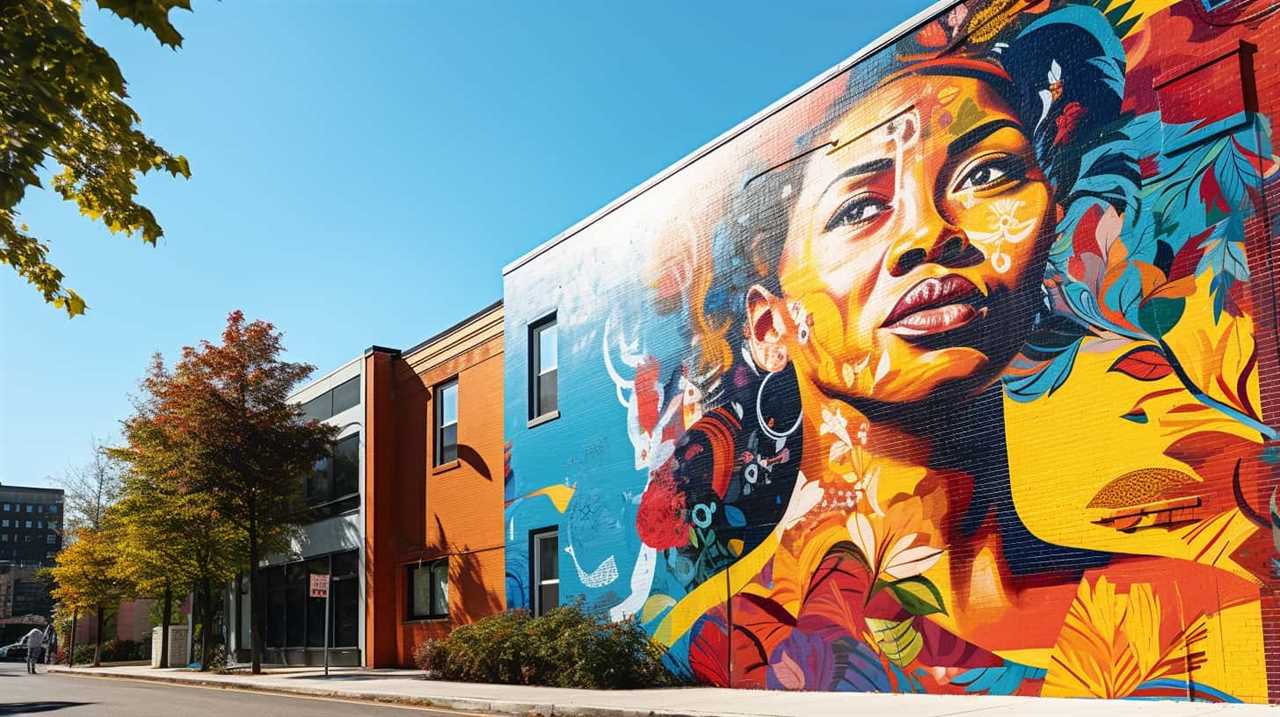
- Social Issues: Art often tackles pressing social issues, such as inequality, discrimination, and environmental degradation. It provides a platform for artists to express their concerns and provoke conversations that lead to change.
- Cultural Identity: Art captures the essence of cultural identity, celebrating diversity and preserving traditions. It reflects the values, rituals, and customs that define a particular society or community.
- Political Commentary: Artists have long used their work to comment on political systems, critiquing power structures and challenging authority. Through their art, they can shine a light on injustices and advocate for social change.
- Beauty and Aesthetics: Artistic expression reflects society’s evolving standards of beauty and aesthetics. It showcases the different ways in which society perceives and appreciates art, influencing trends and shaping taste.
- Historical Documentation: Art serves as a visual record of historical events and societal milestones. It captures moments in time, allowing future generations to understand the values, struggles, and triumphs of the past.
How Does Visual Expression Influence Technology’s Role in Art Dialogue?
Visual expression plays a crucial role in technology’s role in art dialogue by shaping how artists communicate and audiences perceive their work. Advancements in digital art tools and platforms have opened new possibilities for creative expression, sparking ongoing conversations about the intersection of technology and art.
The Transformative Potential of Contemporary Art
Building upon the recognition of art as a reflection of societal values, we now explore the transformative potential of contemporary art.
Contemporary art has the power to challenge and transform perspectives, pushing boundaries and provoking thought in ways that traditional art forms may not. Through artistic innovation, contemporary artists are able to engage with pressing social, political, and cultural issues, providing a platform for dialogue and reflection.
One of the key ways in which contemporary art transforms perspectives is through its ability to challenge the status quo. By presenting alternative narratives and challenging dominant ideologies, contemporary artists encourage viewers to question established norms and consider new possibilities. This process of questioning and reevaluating can lead to a shift in consciousness and a greater awareness of societal injustices.
Artistic innovation is another crucial element in the transformative potential of contemporary art. Artists today are constantly exploring new mediums, techniques, and forms of expression, pushing the boundaries of what’s considered art. This experimentation not only challenges traditional notions of art, but also invites viewers to engage with the artwork in different ways. By breaking free from established conventions, contemporary art has the ability to inspire and provoke, pushing society towards new ways of thinking and being.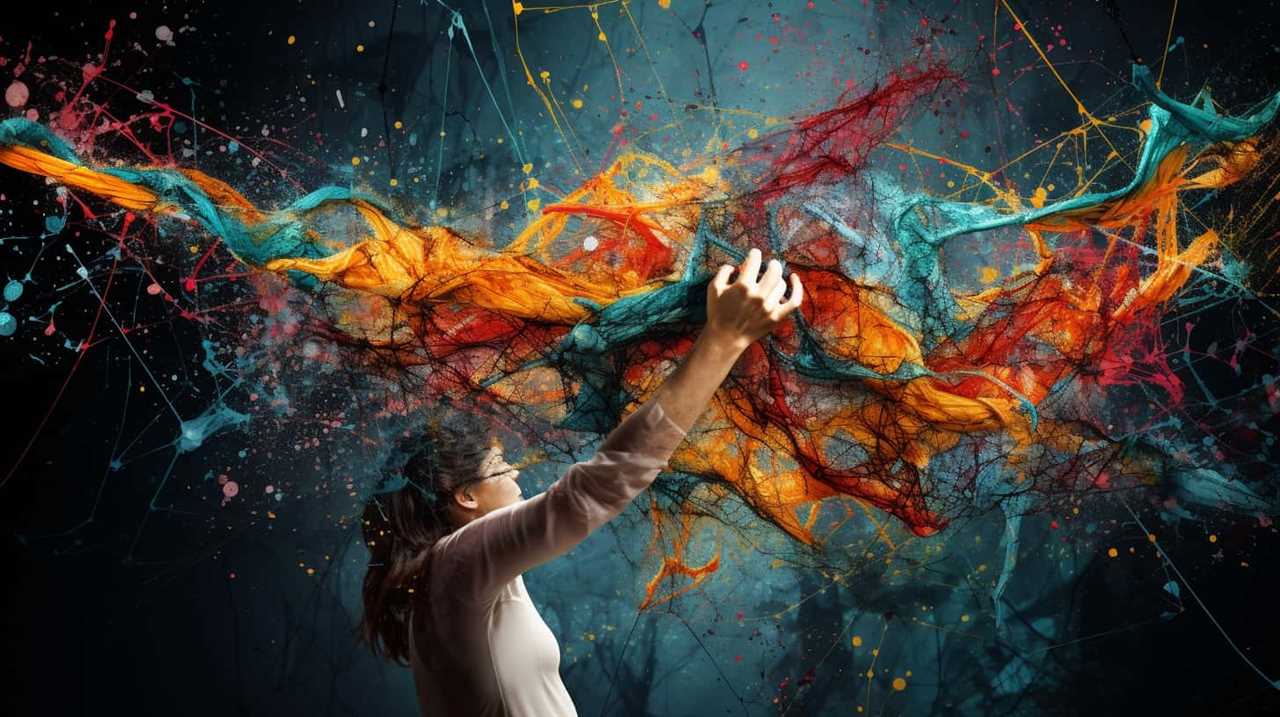
Frequently Asked Questions
How Can Visual Expression Be Used to Shape Society?
Visual expression shapes society by empowering artistic activism and fostering visual storytelling. It allows us to challenge norms, ignite critical thinking, and amplify marginalized voices, paving the way for social change and liberation.
What Are Some Examples of Art That Has Sparked Social Change?
Artivism and protest art are powerful examples of how art can spark social change. These forms of visual expression challenge the status quo, ignite conversations, and mobilize communities towards liberation and justice.
How Can Art Be Used to Challenge Societal Norms?
Artistic rebellion challenges societal norms by presenting unconventional perspectives. Through visual expression, we liberate ourselves from the shackles of conformity. Art has the power to ignite change, to inspire revolution, and to reshape society.
What Role Does Art Play in Addressing Social Injustice?
Art’s impact on addressing social injustice is profound. Artists as activists have the power to amplify marginalized voices, challenge oppressive systems, and ignite change. Through visual expression, art becomes a catalyst for liberation and a powerful tool for social transformation.
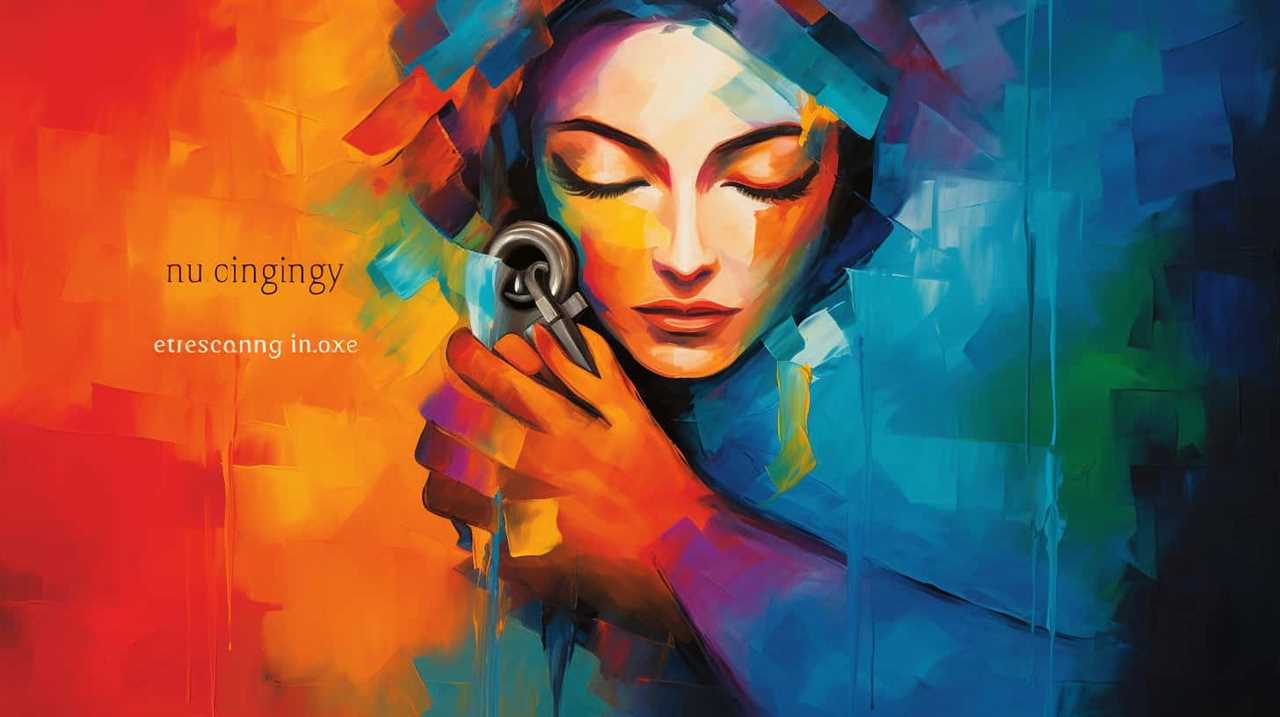
How Does Contemporary Art Have the Potential to Transform Society?
Contemporary art, with its power of visual expression, has the potential to ignite societal transformation. Through its thought-provoking and boundary-pushing nature, it challenges norms and inspires critical thinking, creating a path towards liberation and progress.
Conclusion
In conclusion, visual expression holds an immense power to shape society and ignite change. Through art, we can critique societal norms, challenge injustice, and redefine cultural values. It serves as a reflection of our values and a catalyst for social movements.
The transformative potential of contemporary art can’t be underestimated. By embracing the coincidence of our diverse voices, we can create a society that values and celebrates the power of visual expression to shape a better future.
Lauren’s talent in writing is matched by her passion for storytelling. Her love for books and deep understanding of culture and entertainment add a distinct flavor to her work. As our media and press contact, Lauren skillfully bridges the gap between afterQuotes and the broader media landscape, bringing our message to a wider audience.
-

 Funerals Quotations3 months ago
Funerals Quotations3 months agoSoothing Hope Quotes for Funeral Reflections
-

 TV Shows Quotations2 months ago
TV Shows Quotations2 months agoTop 4 Unforgettable TV Drama Monologues
-

 Movies Quotations4 weeks ago
Movies Quotations4 weeks agoUnforgettable Cult Movie Quotes: A Compiled List
-

 Education and Knowledge1 week ago
Education and Knowledge1 week agoUnlock Success with the Best Study Motivation Quotes
-

 Travel and Exploration Quotations3 weeks ago
Travel and Exploration Quotations3 weeks agoWisdom on Waves: Notable Maritime Explorer Quotations
-

 Education and Knowledge1 week ago
Education and Knowledge1 week agoBest Study Quotes: Unlock Student Potential!
-

 Military Quotations2 months ago
Military Quotations2 months agoInspiring Military Quotations for Strength & Honor
-

 Travel and Exploration Quotations3 weeks ago
Travel and Exploration Quotations3 weeks agoWhy Travel Teaches Unforgettable Life Wisdom?



